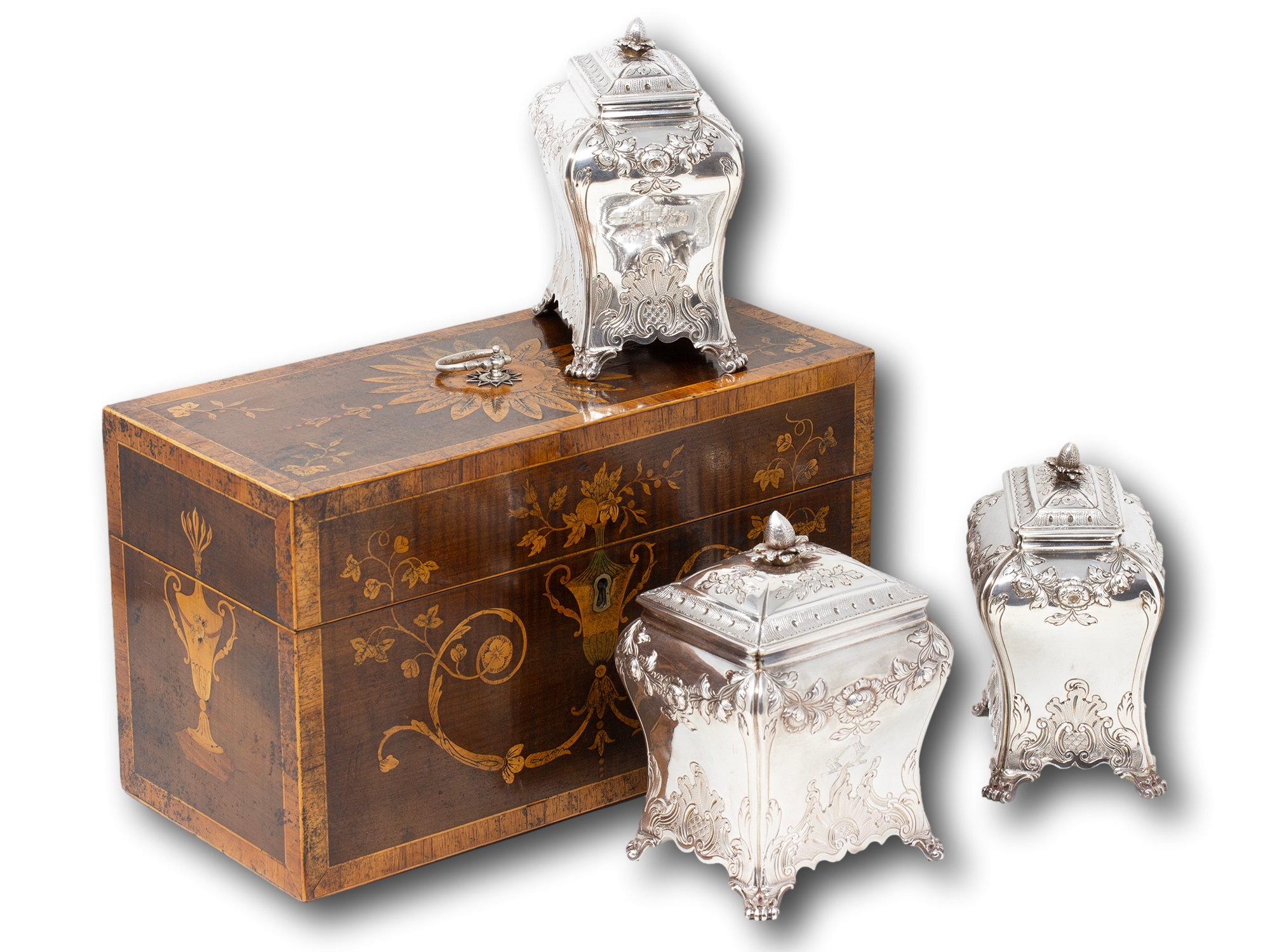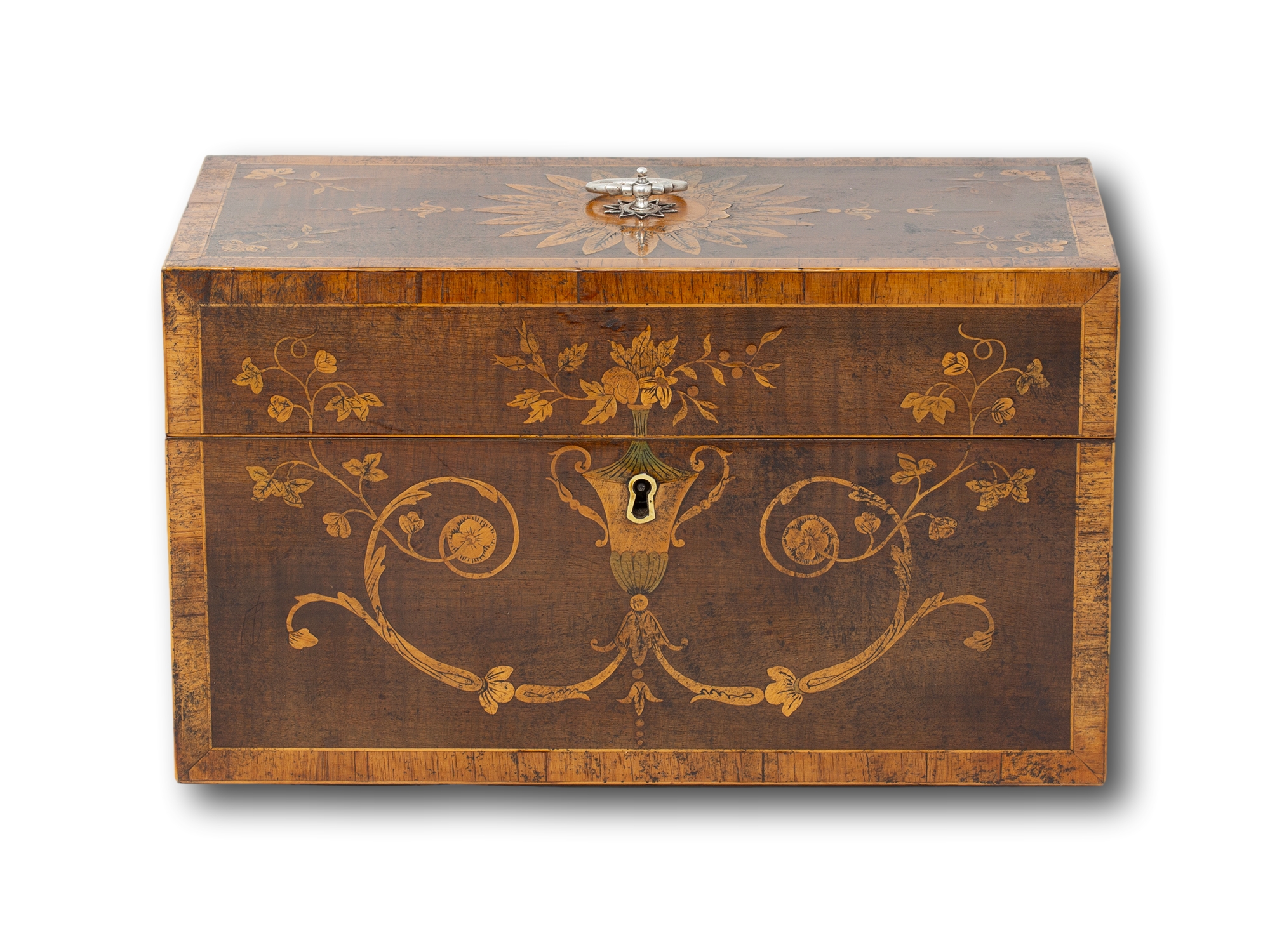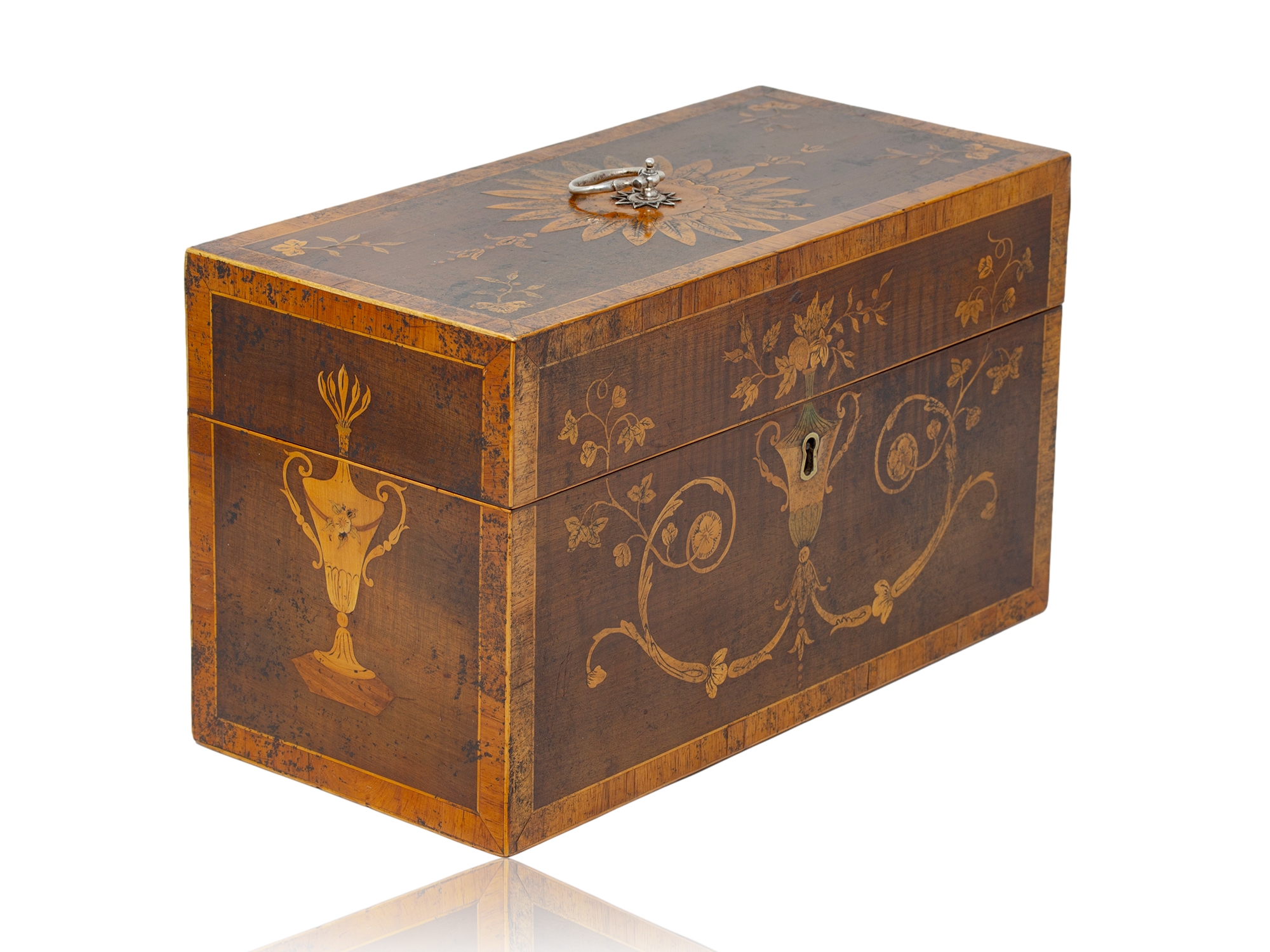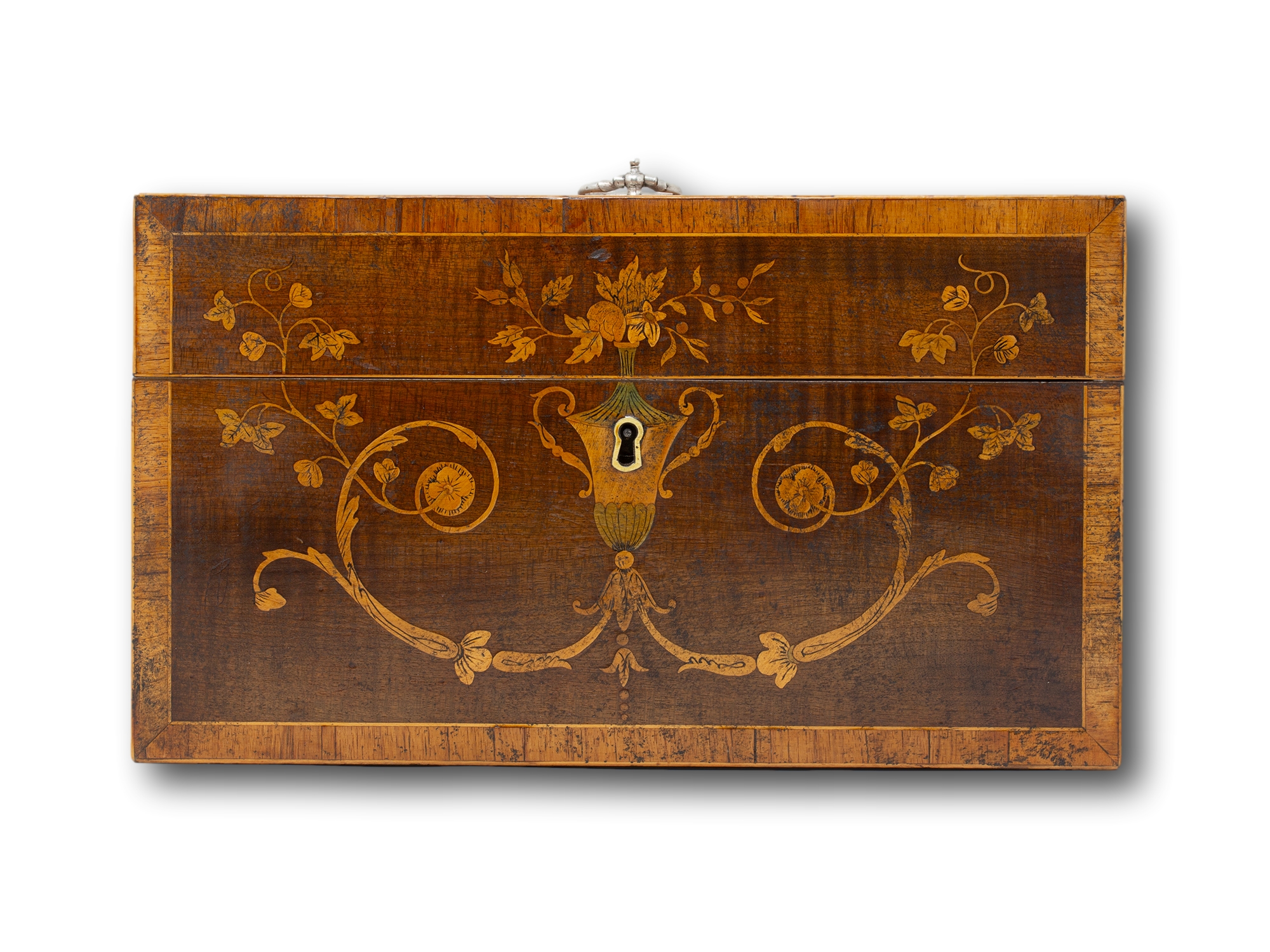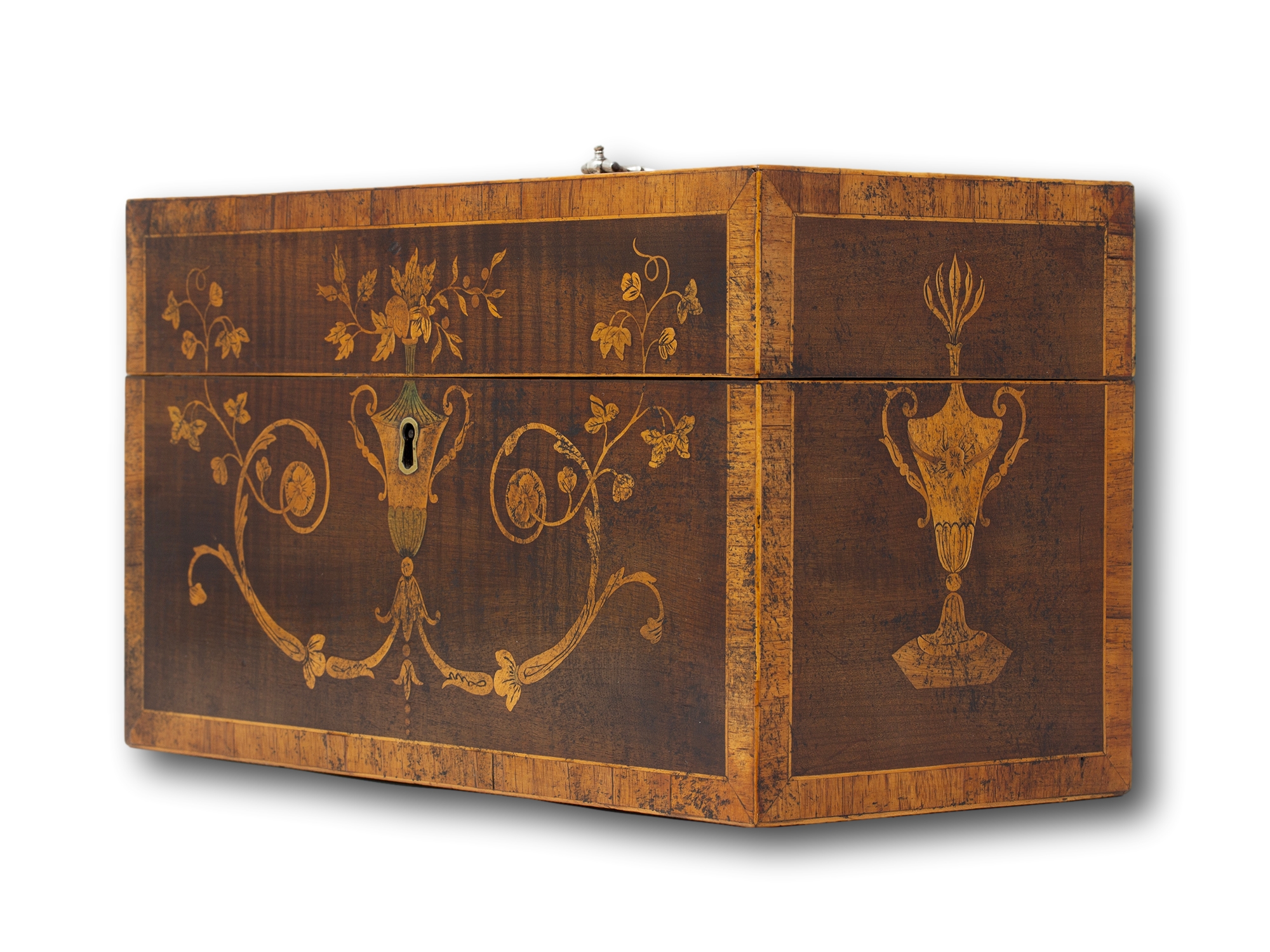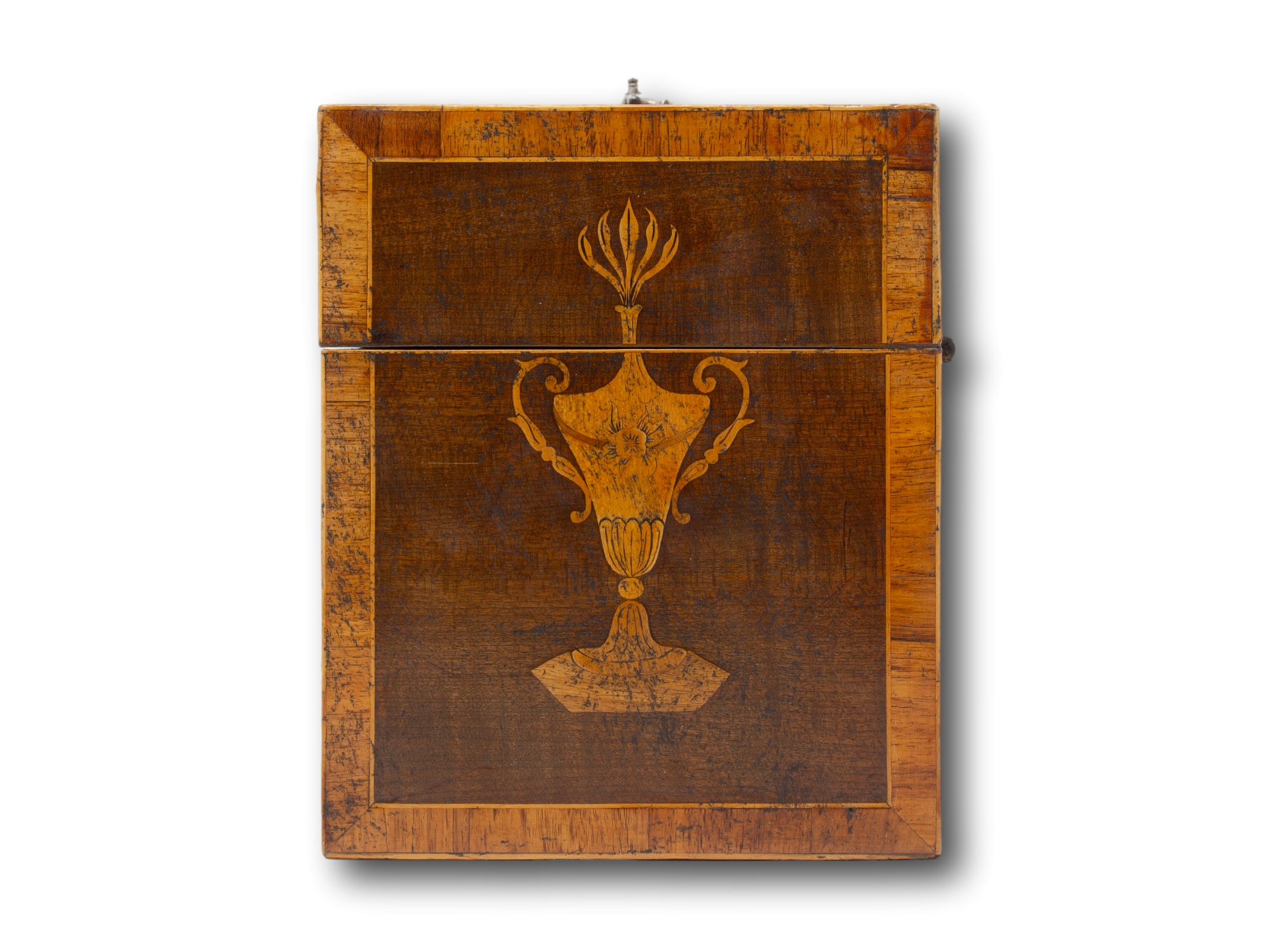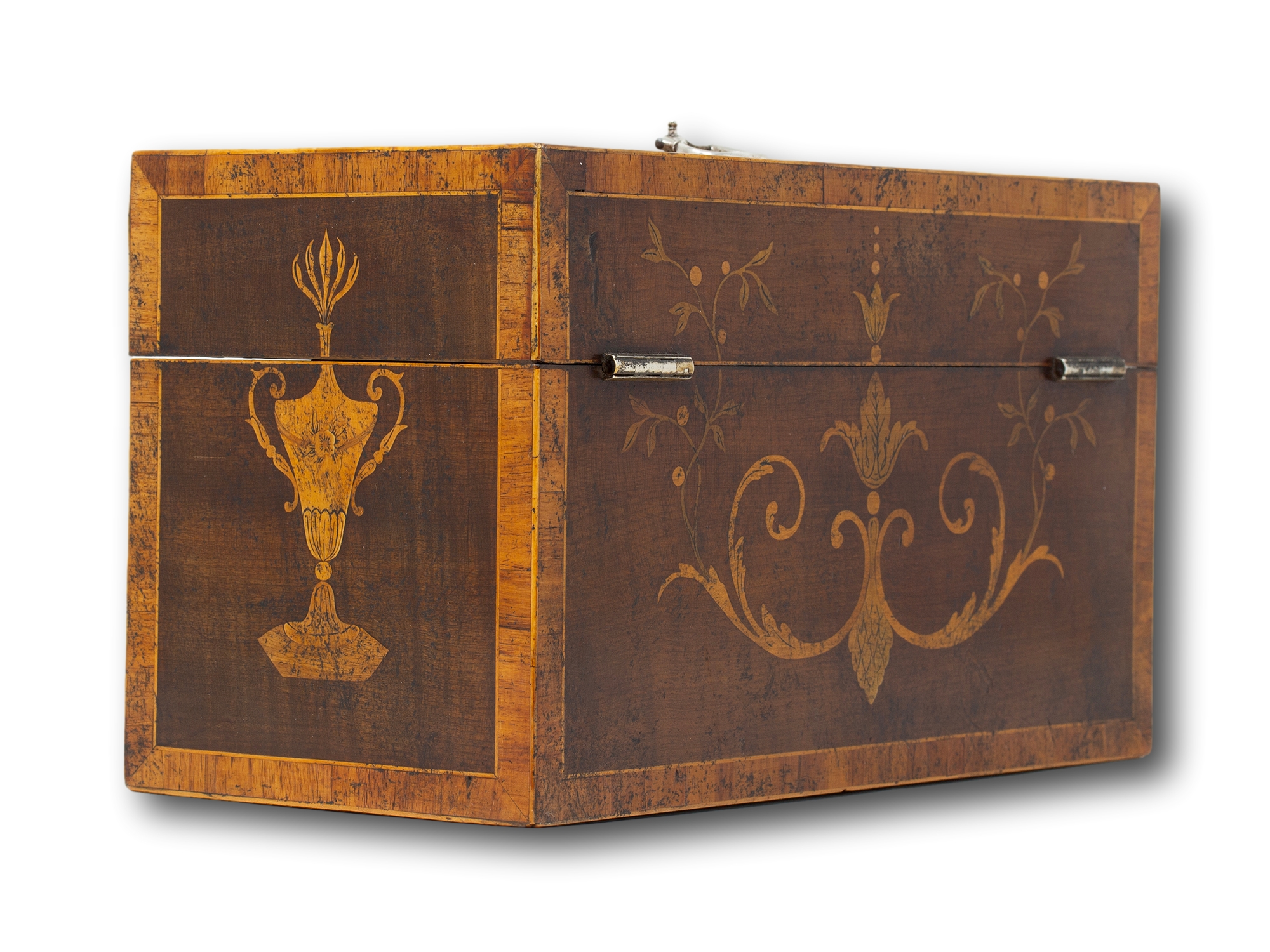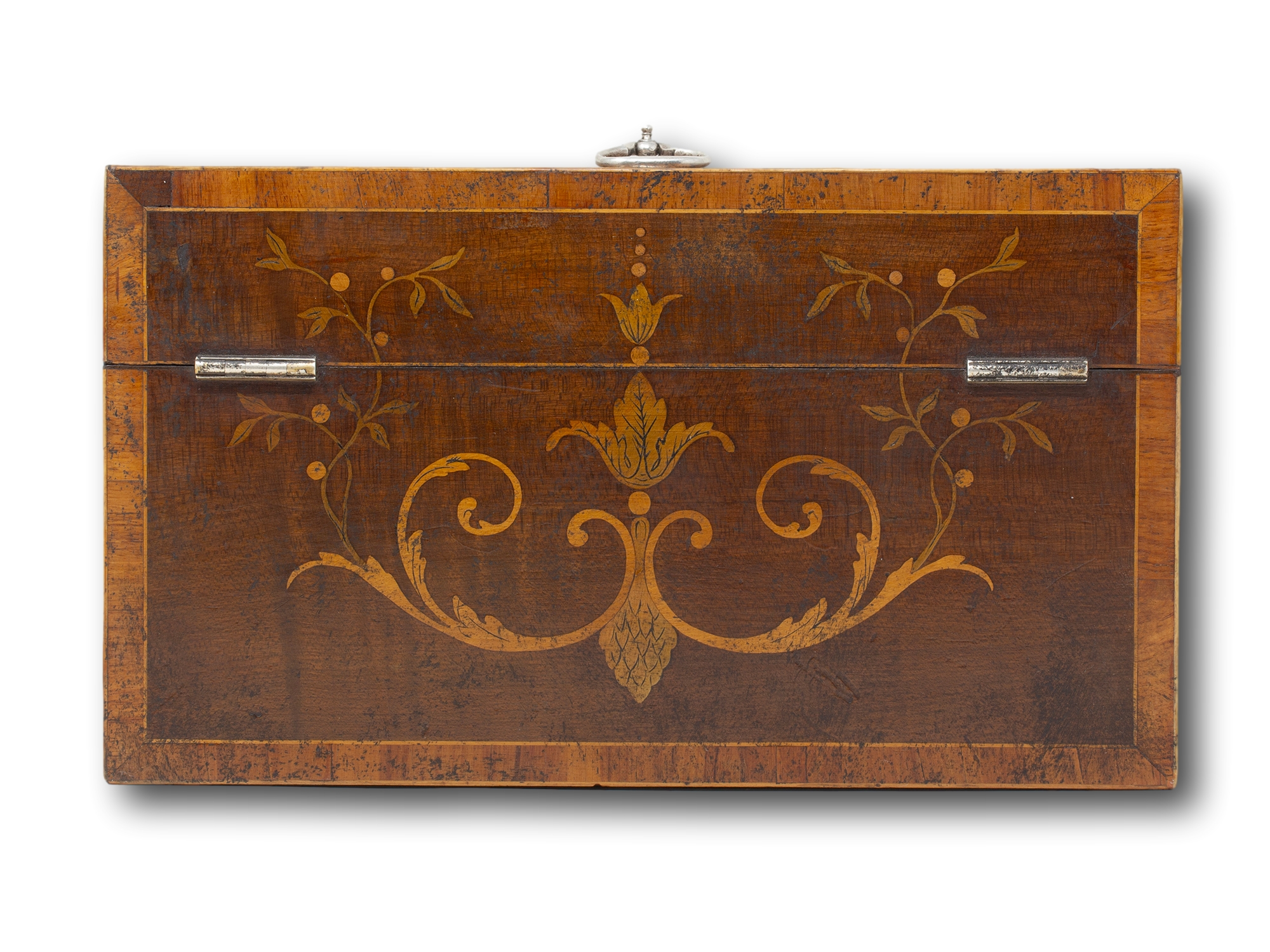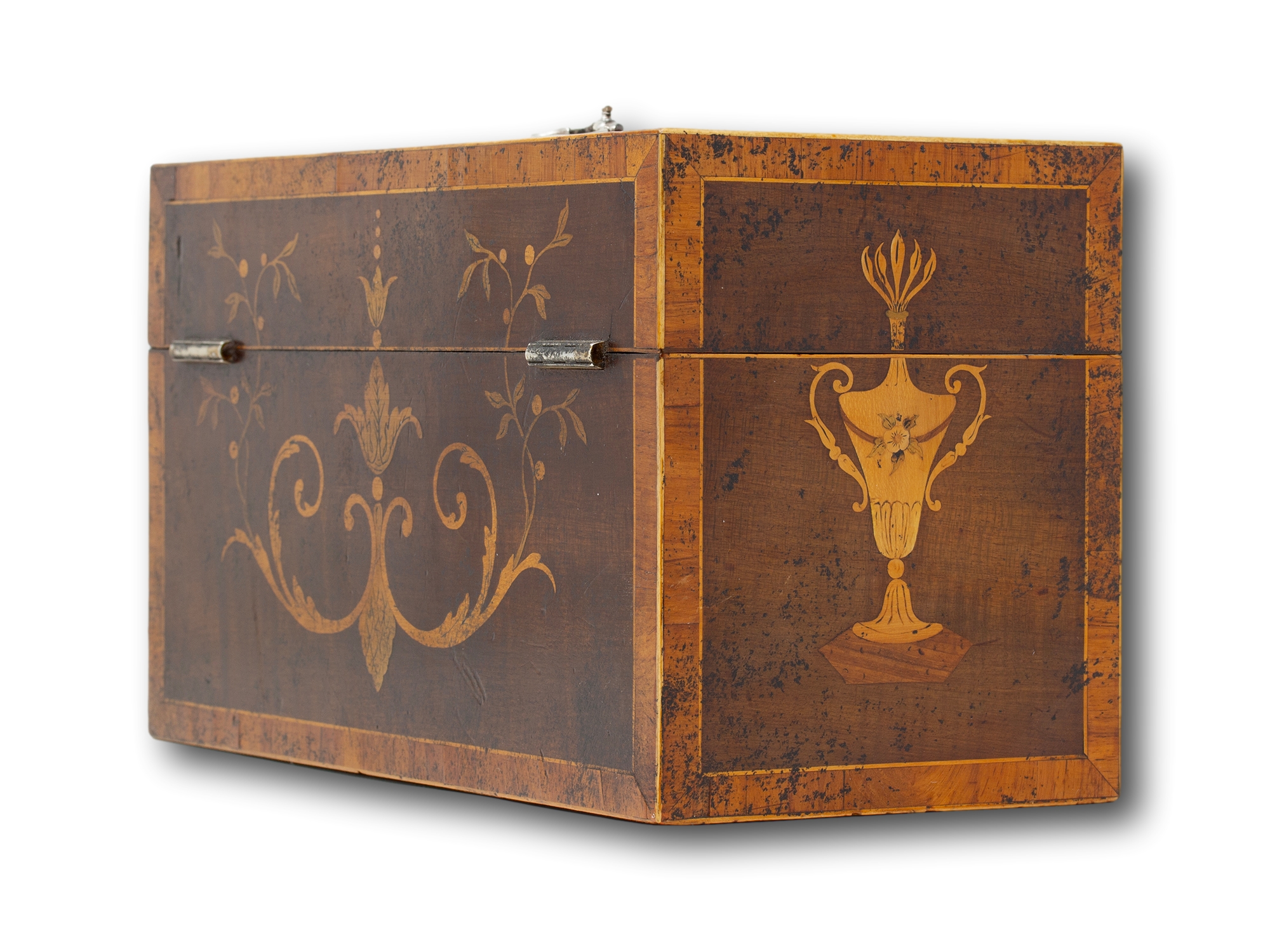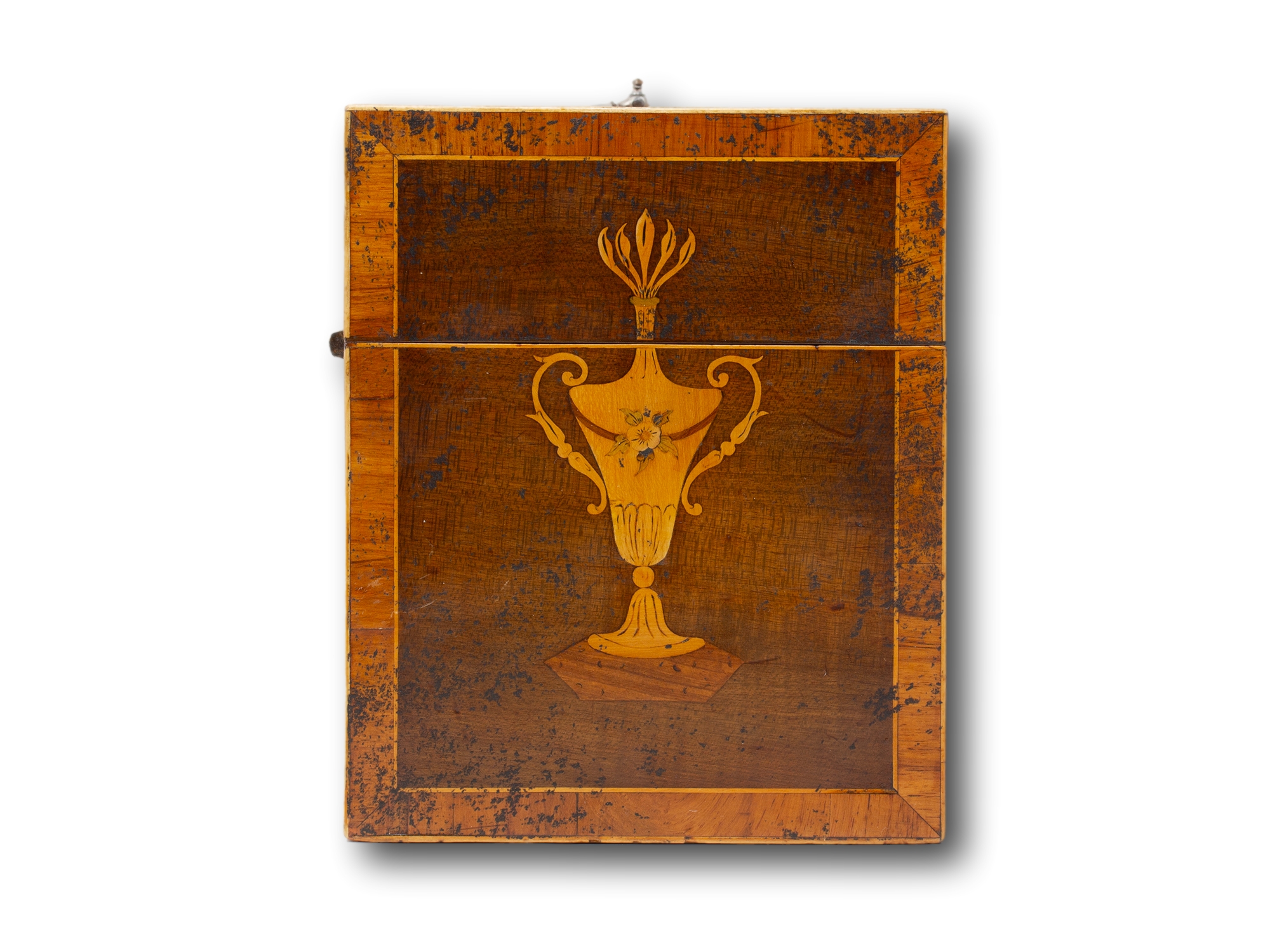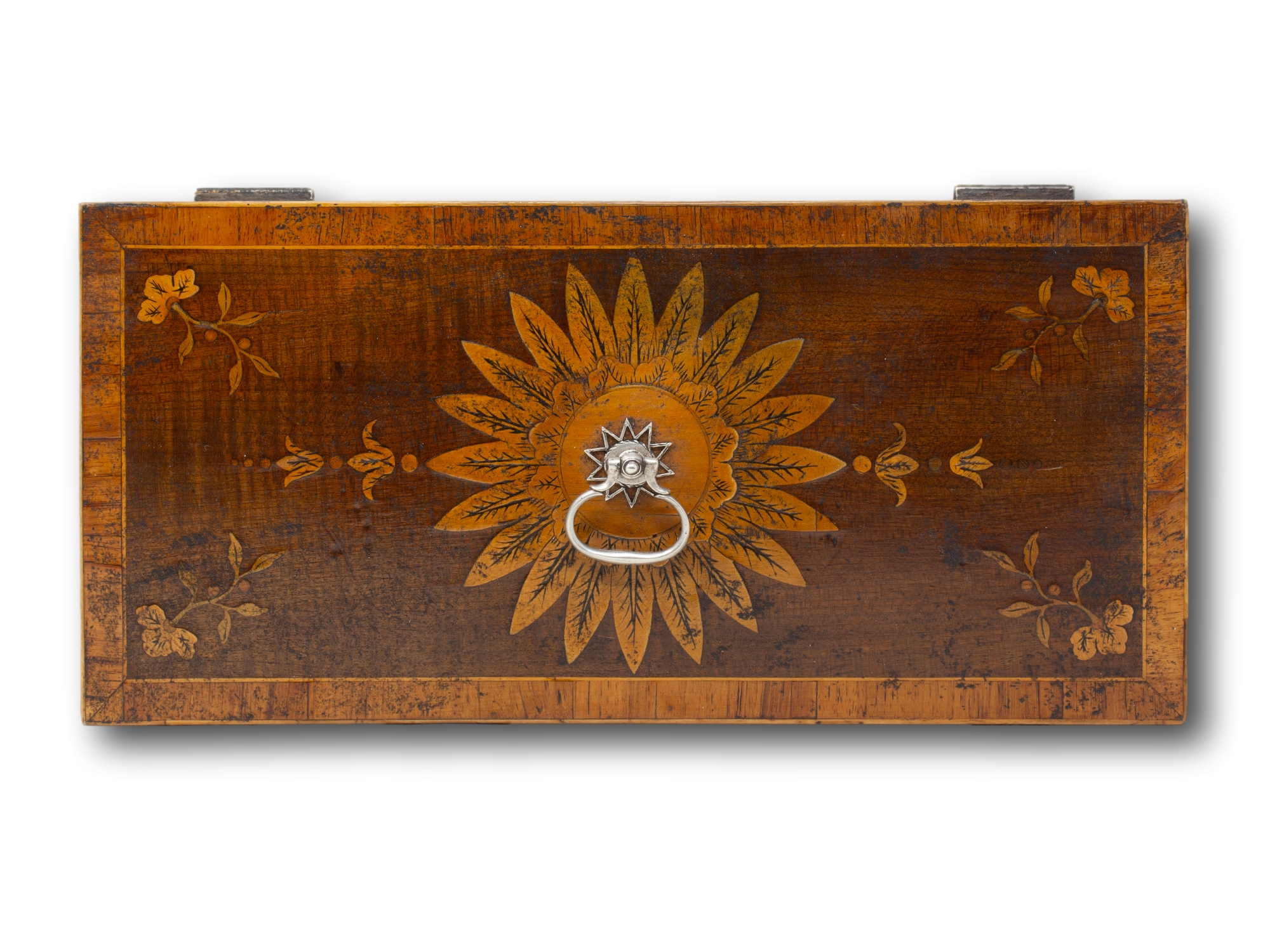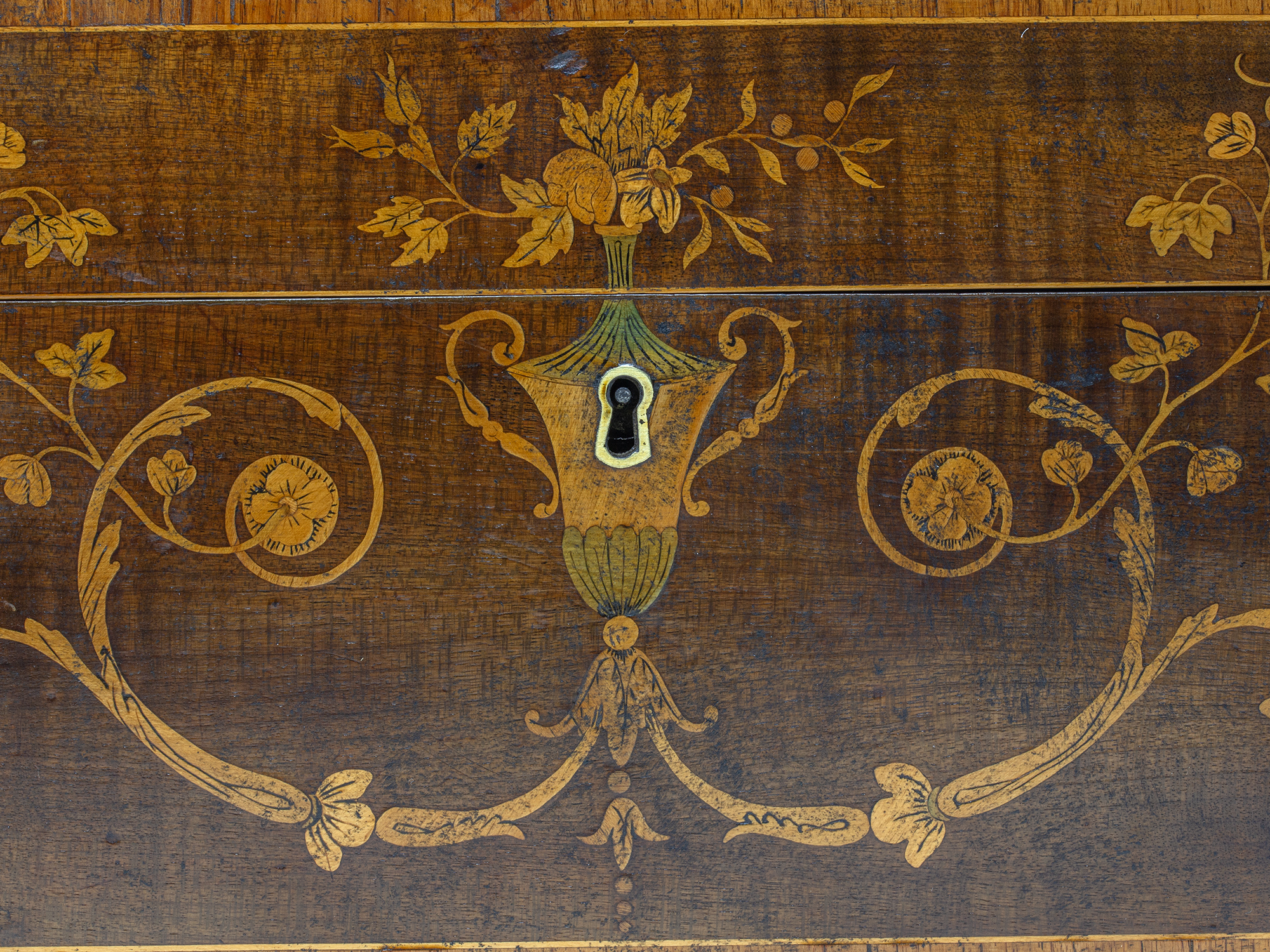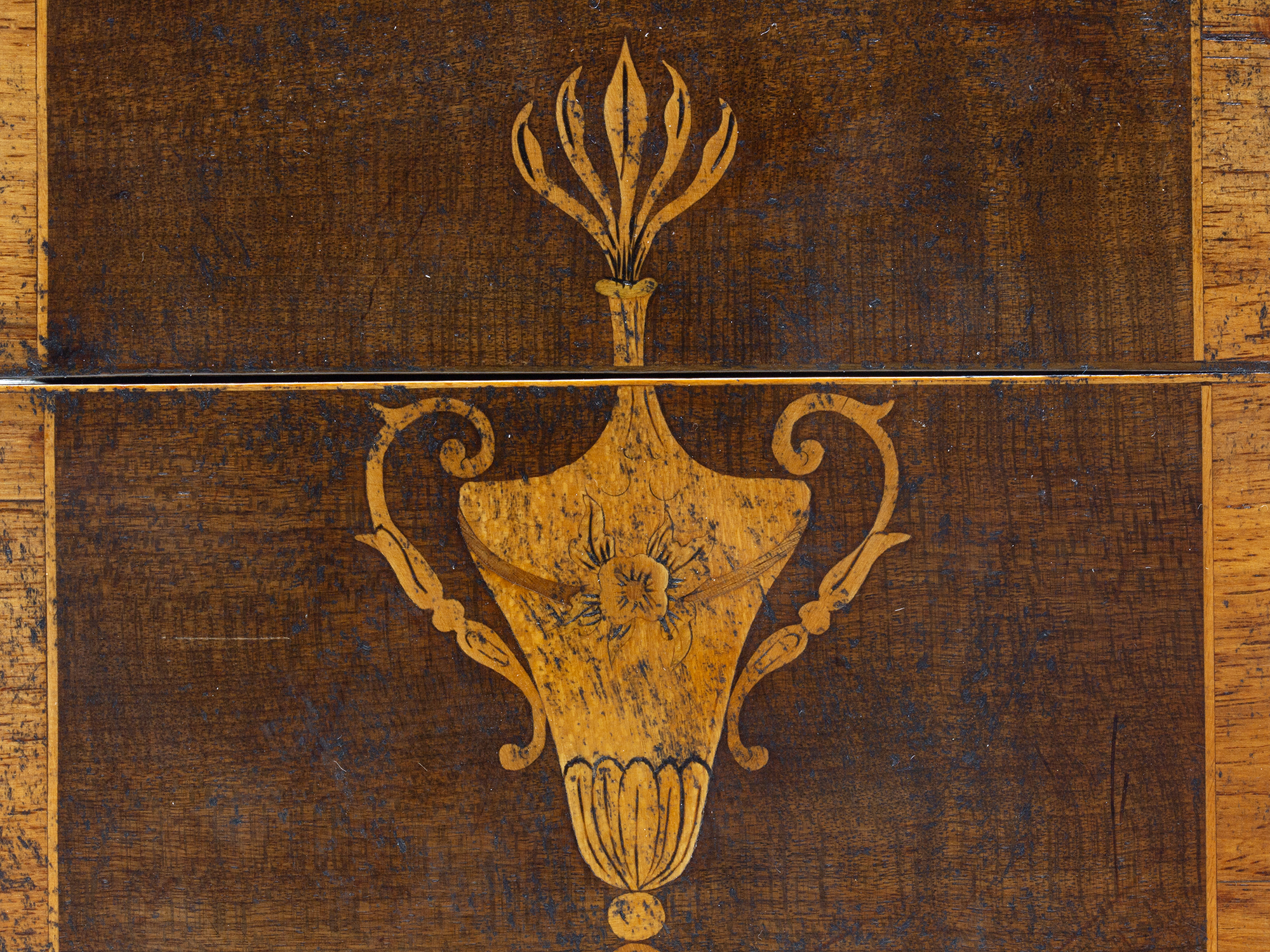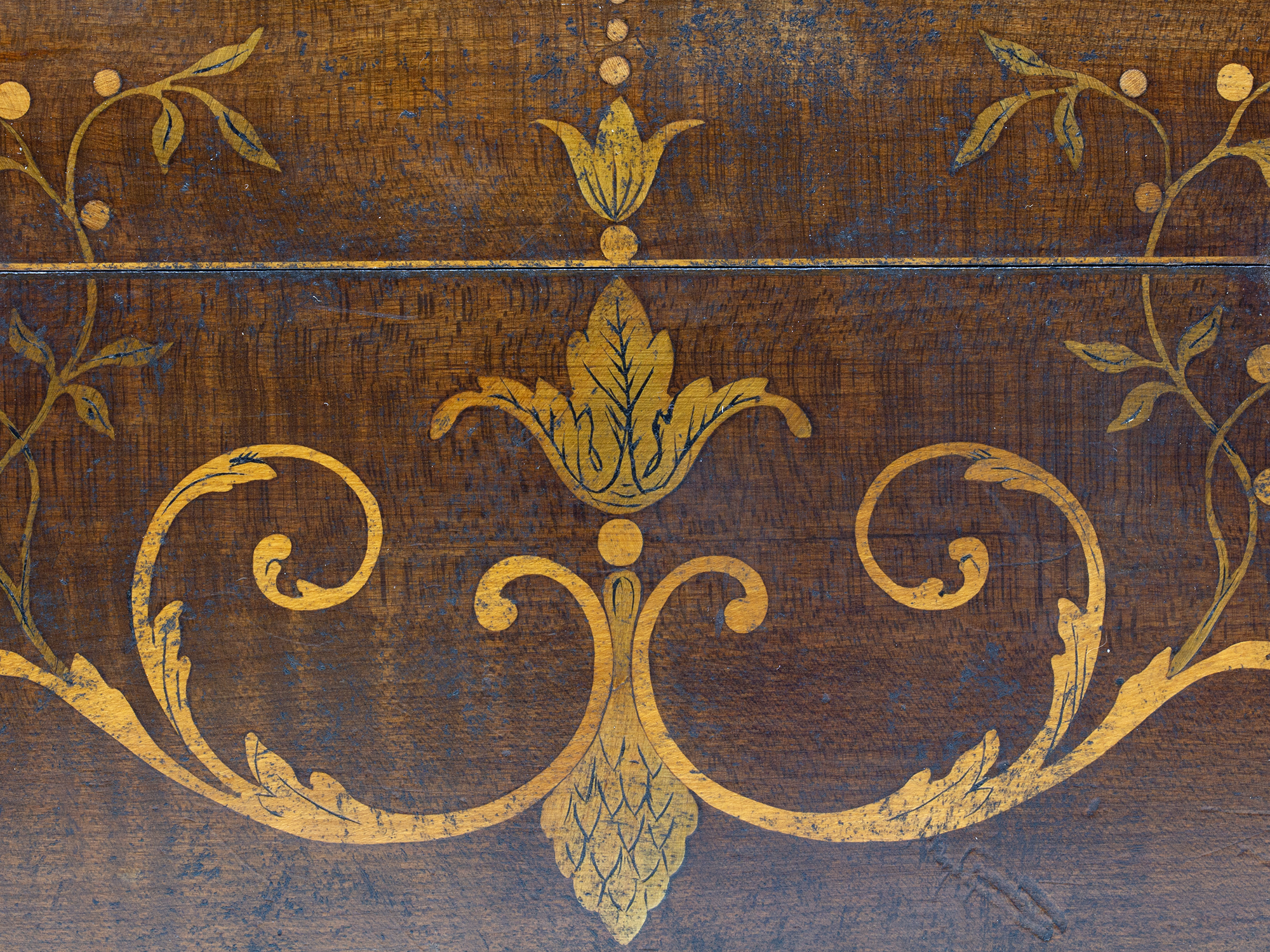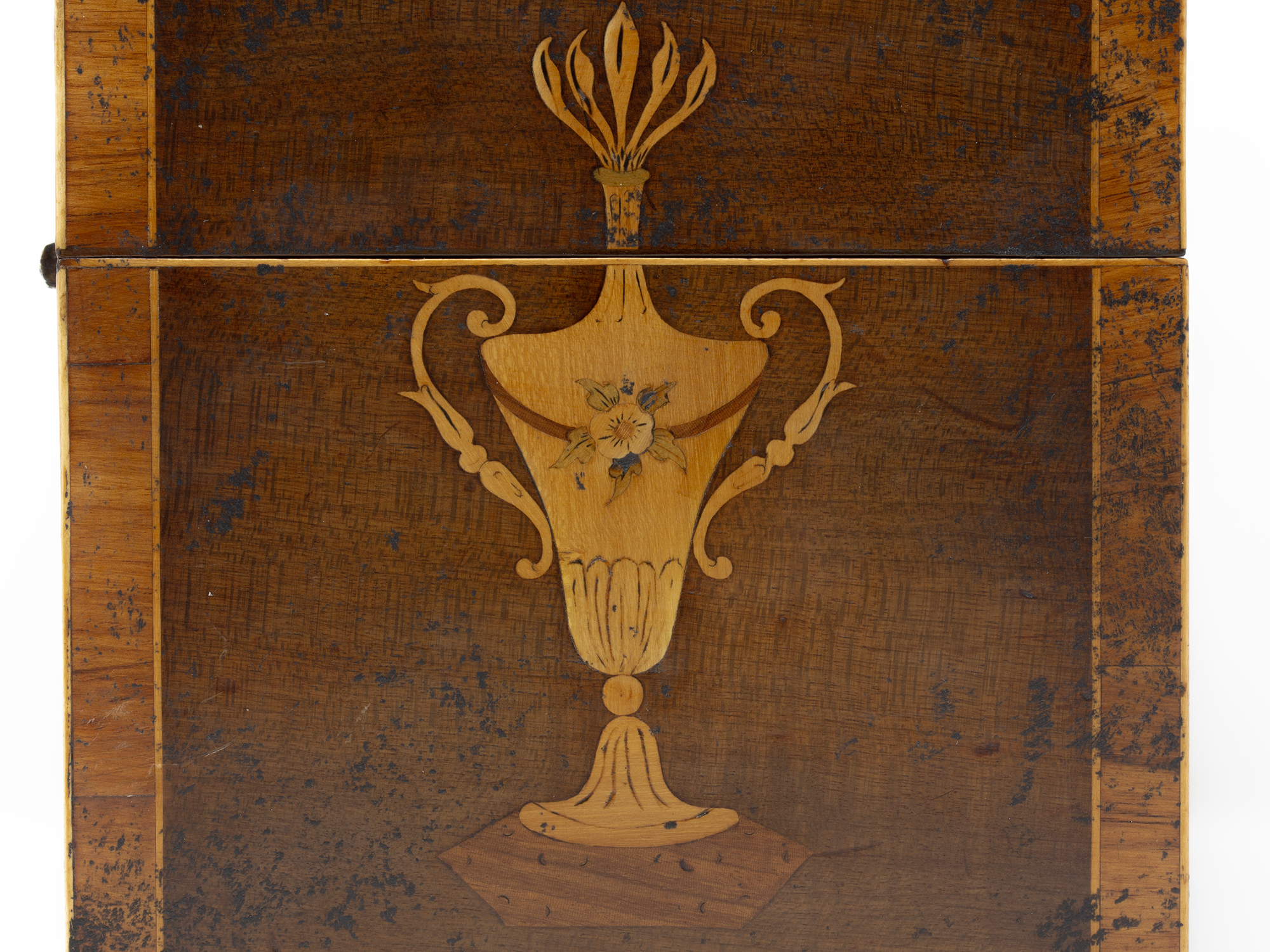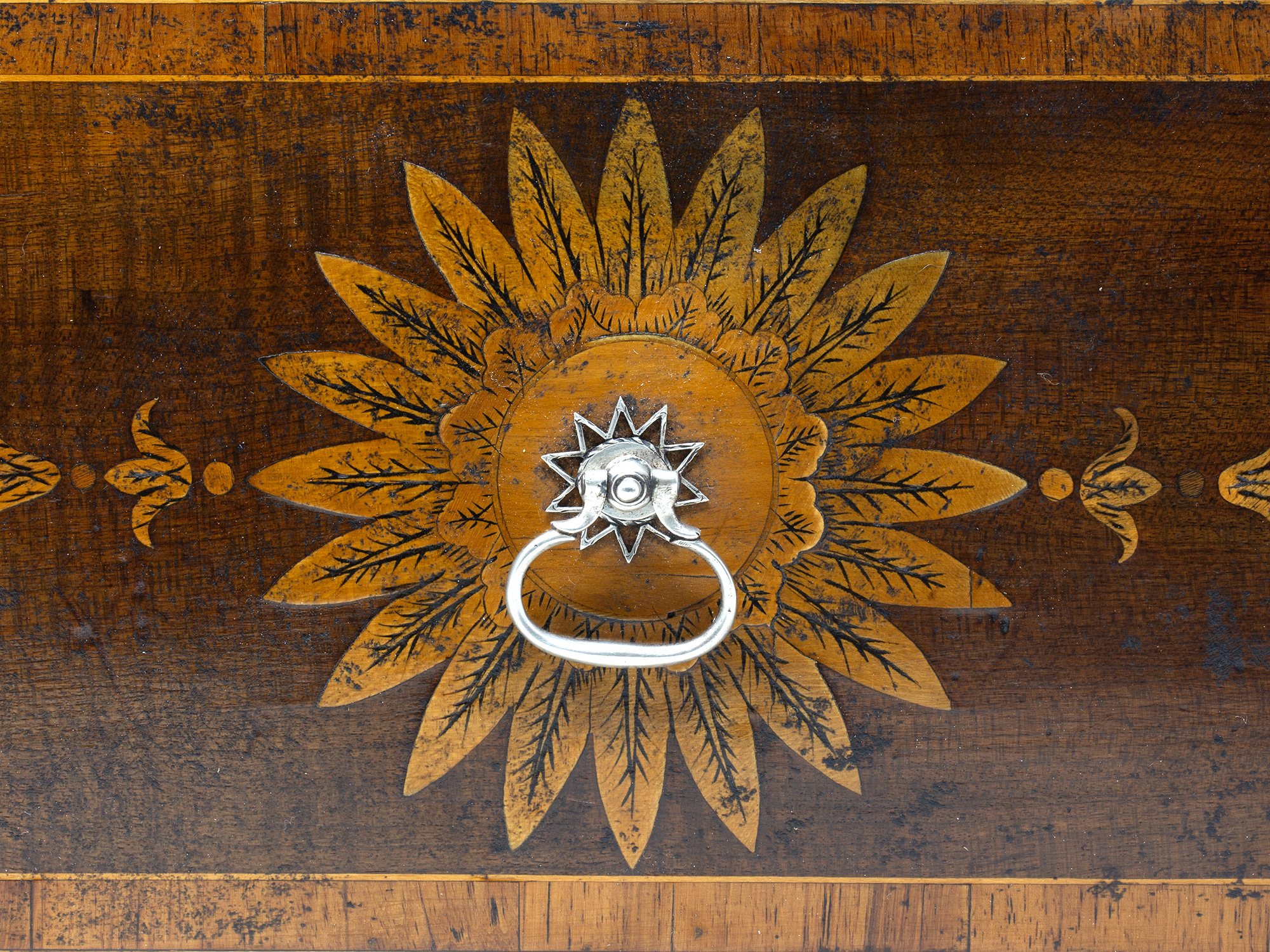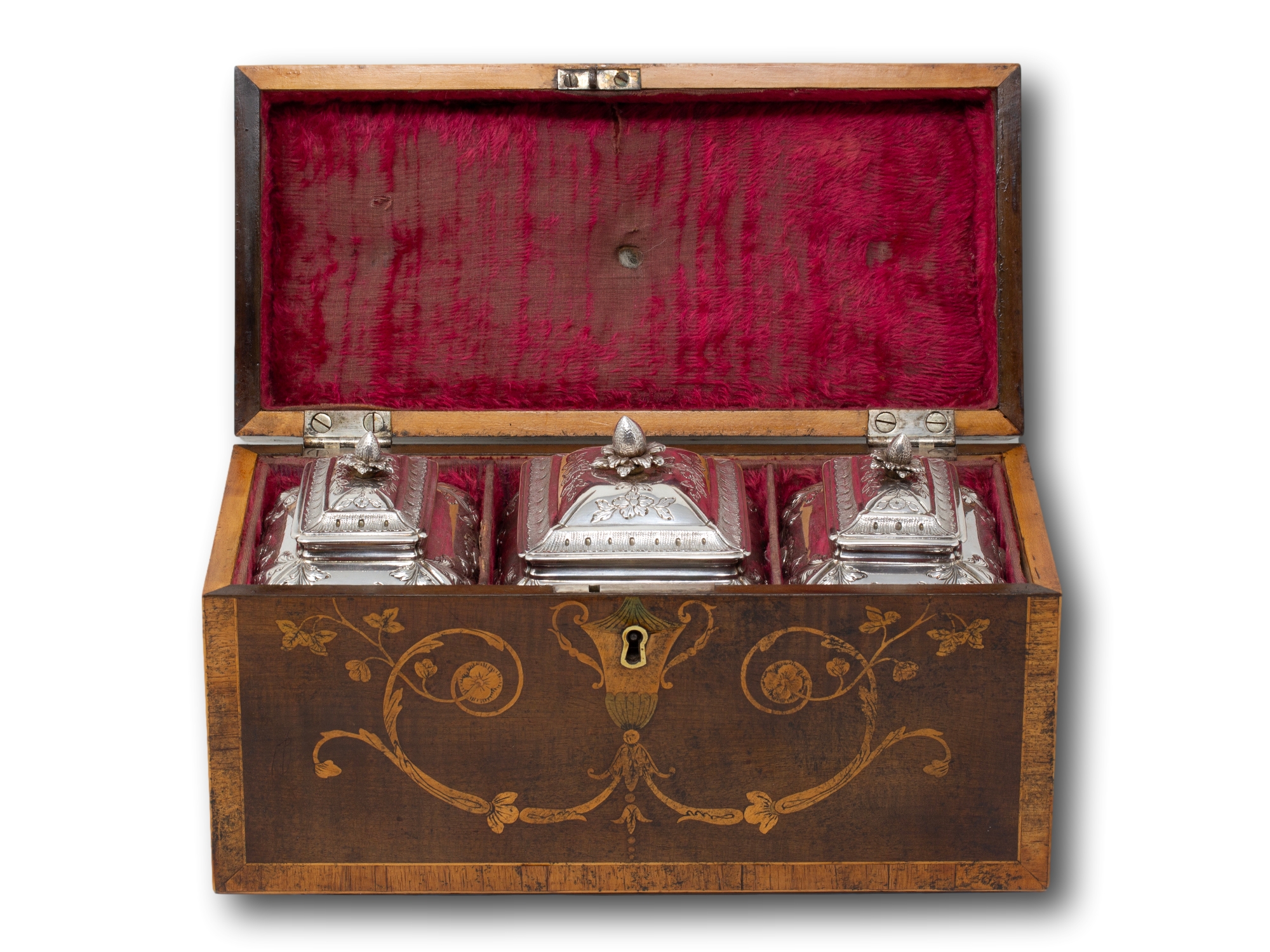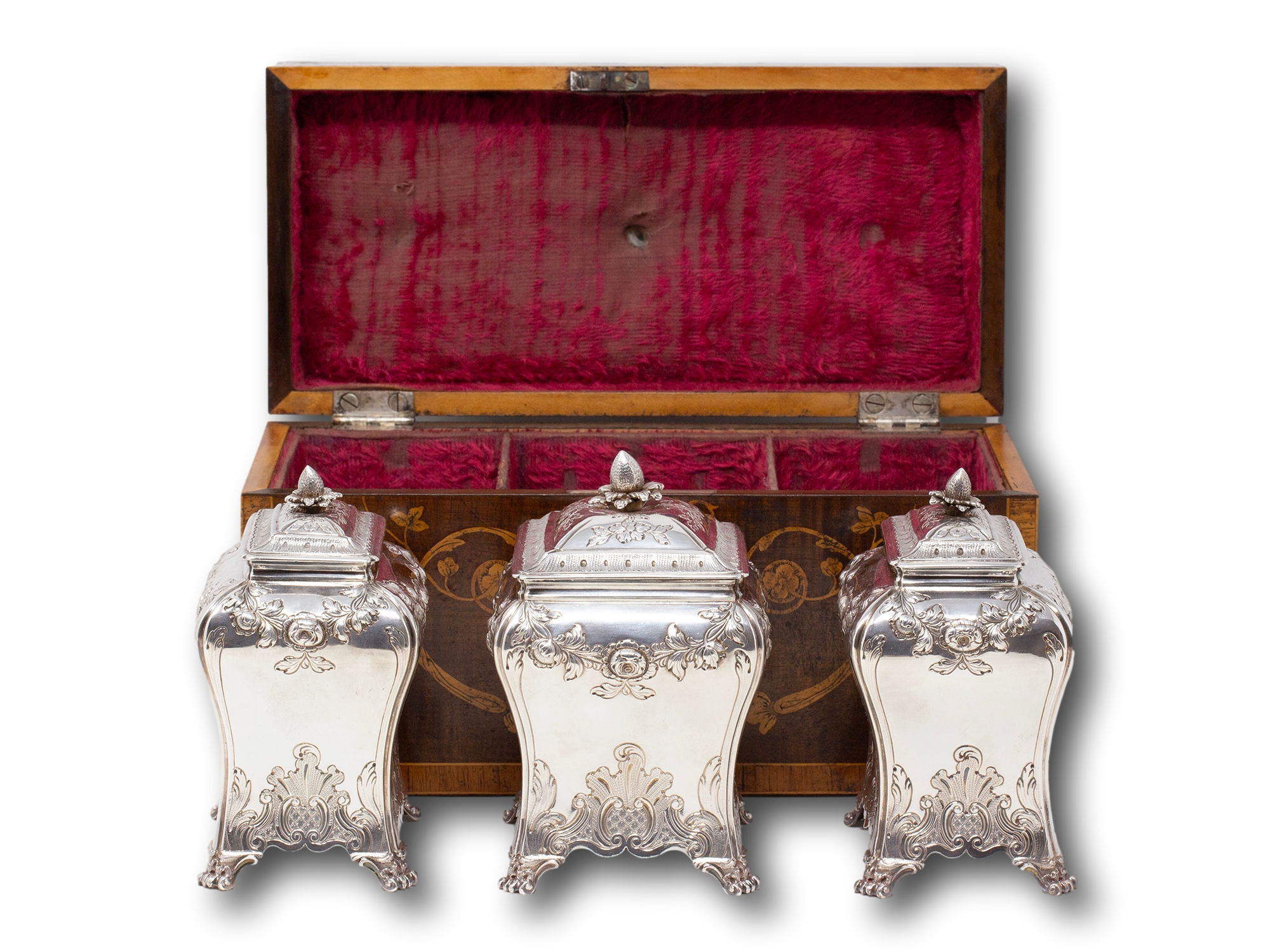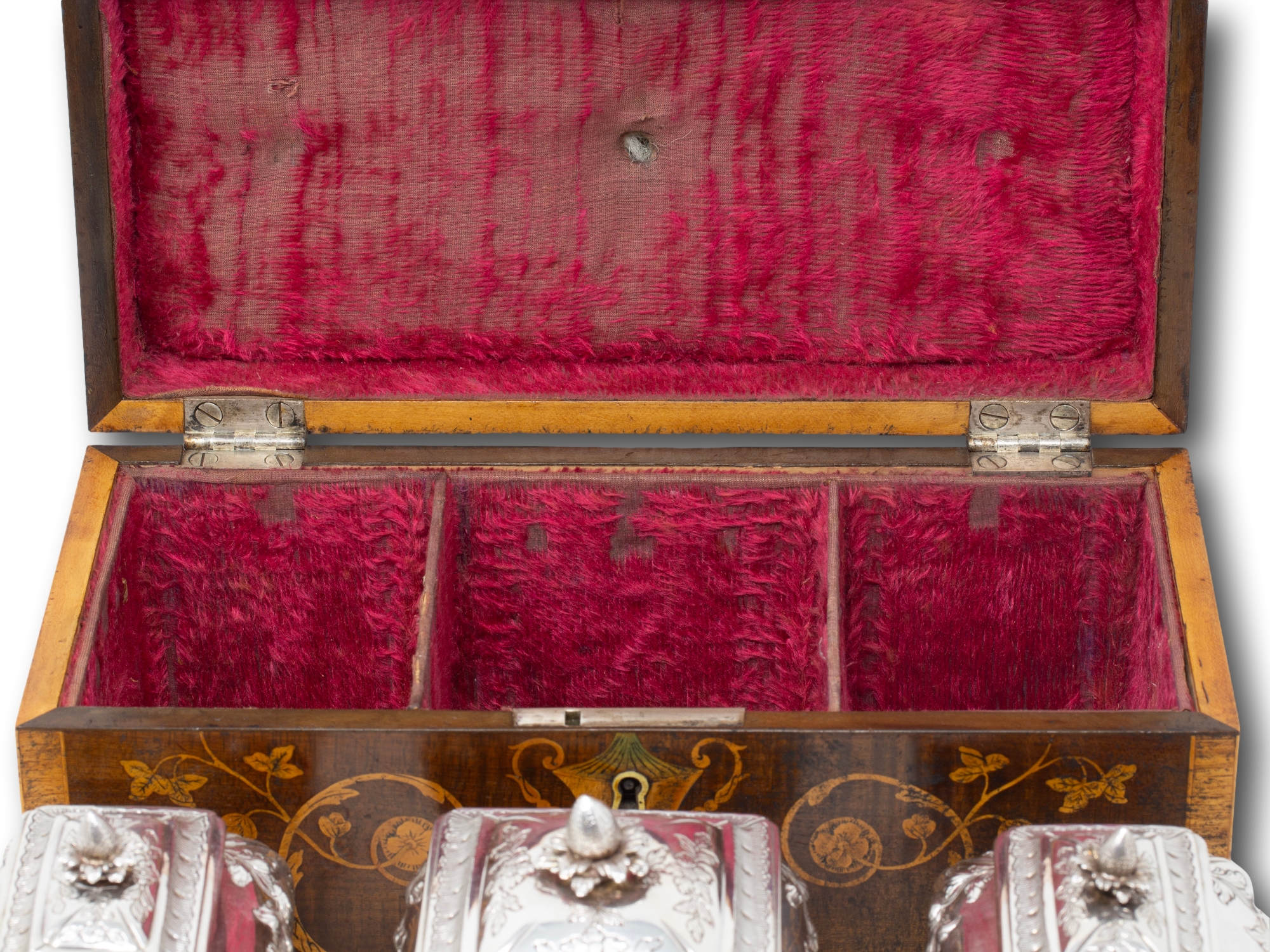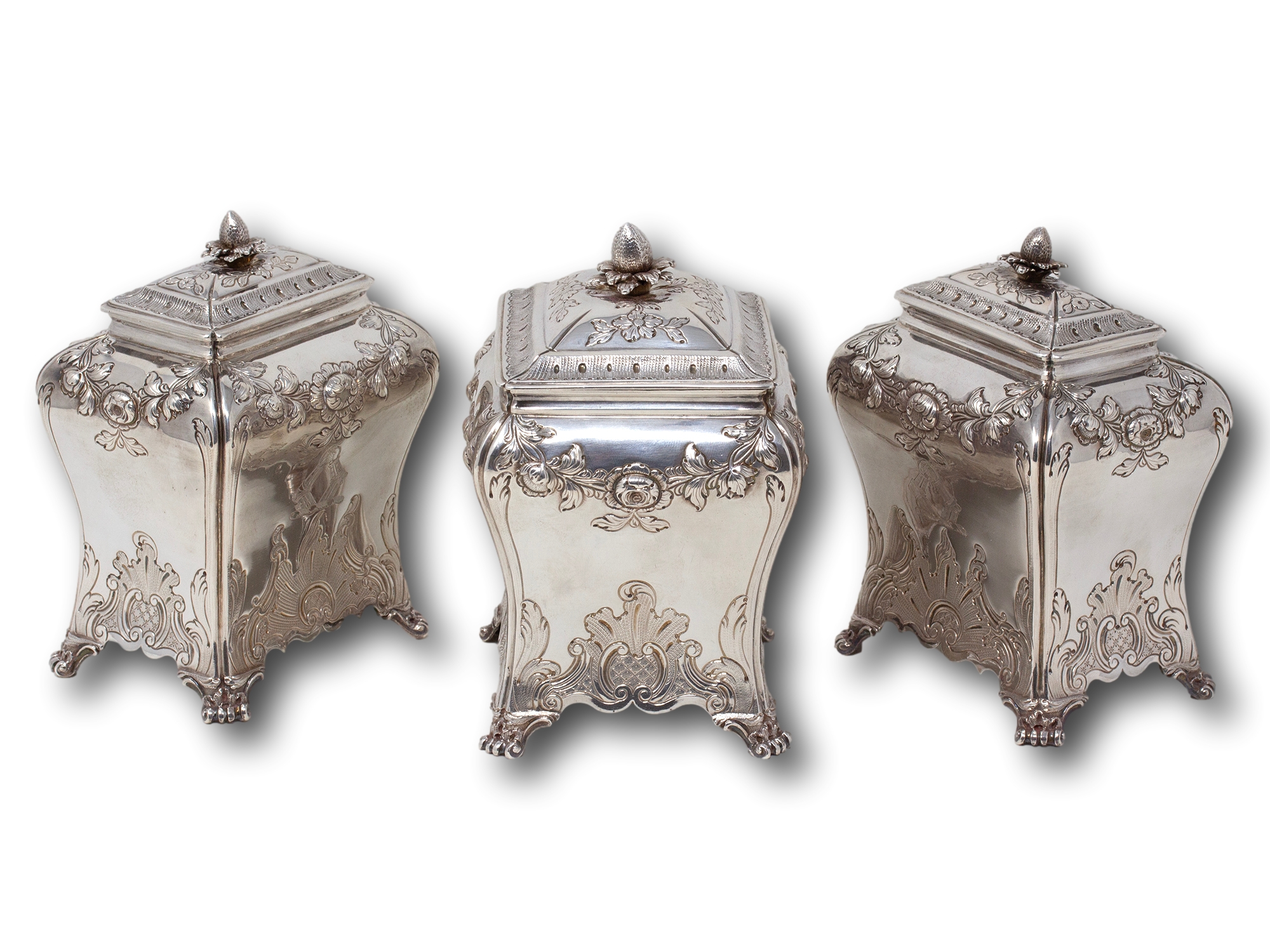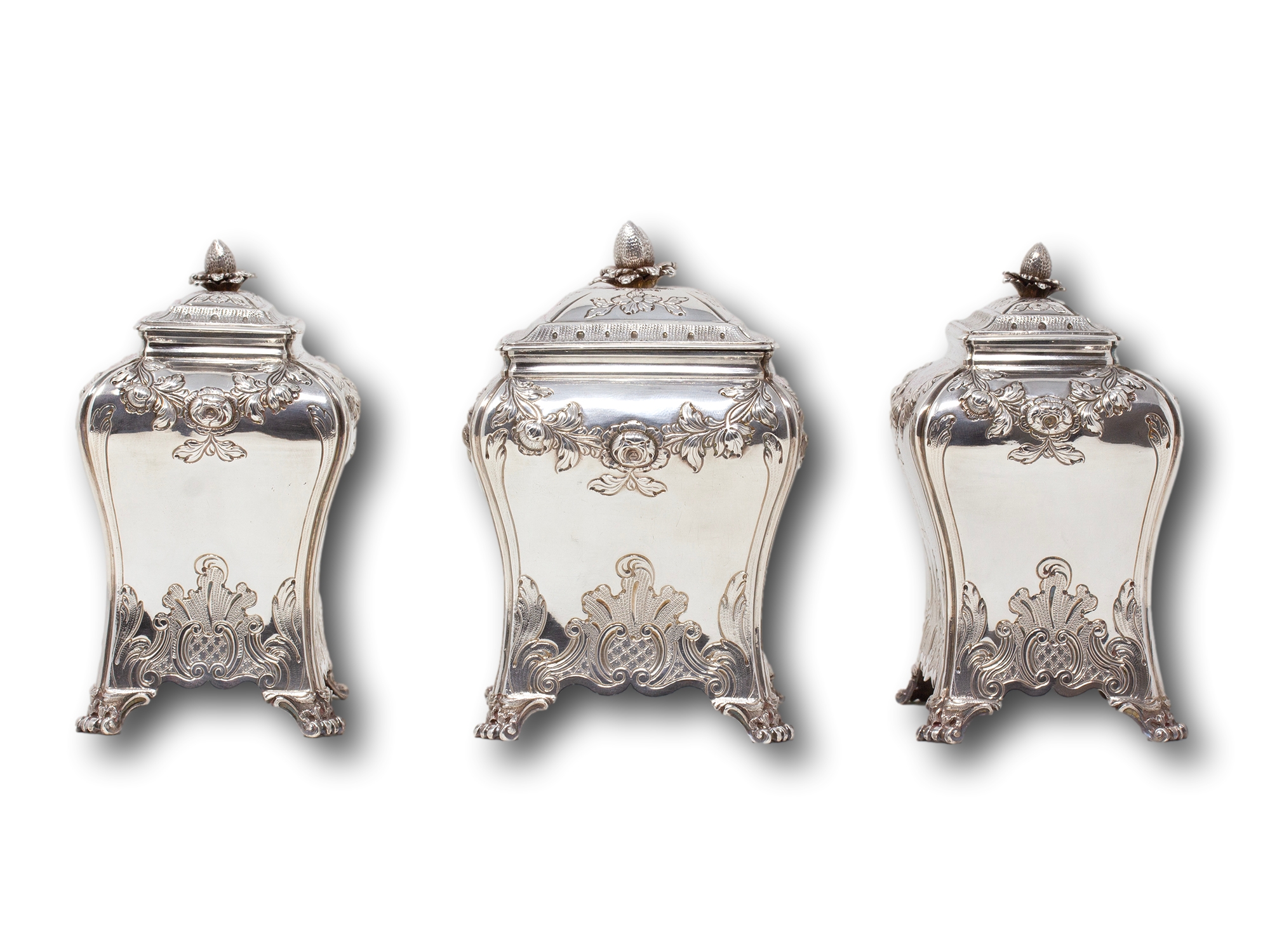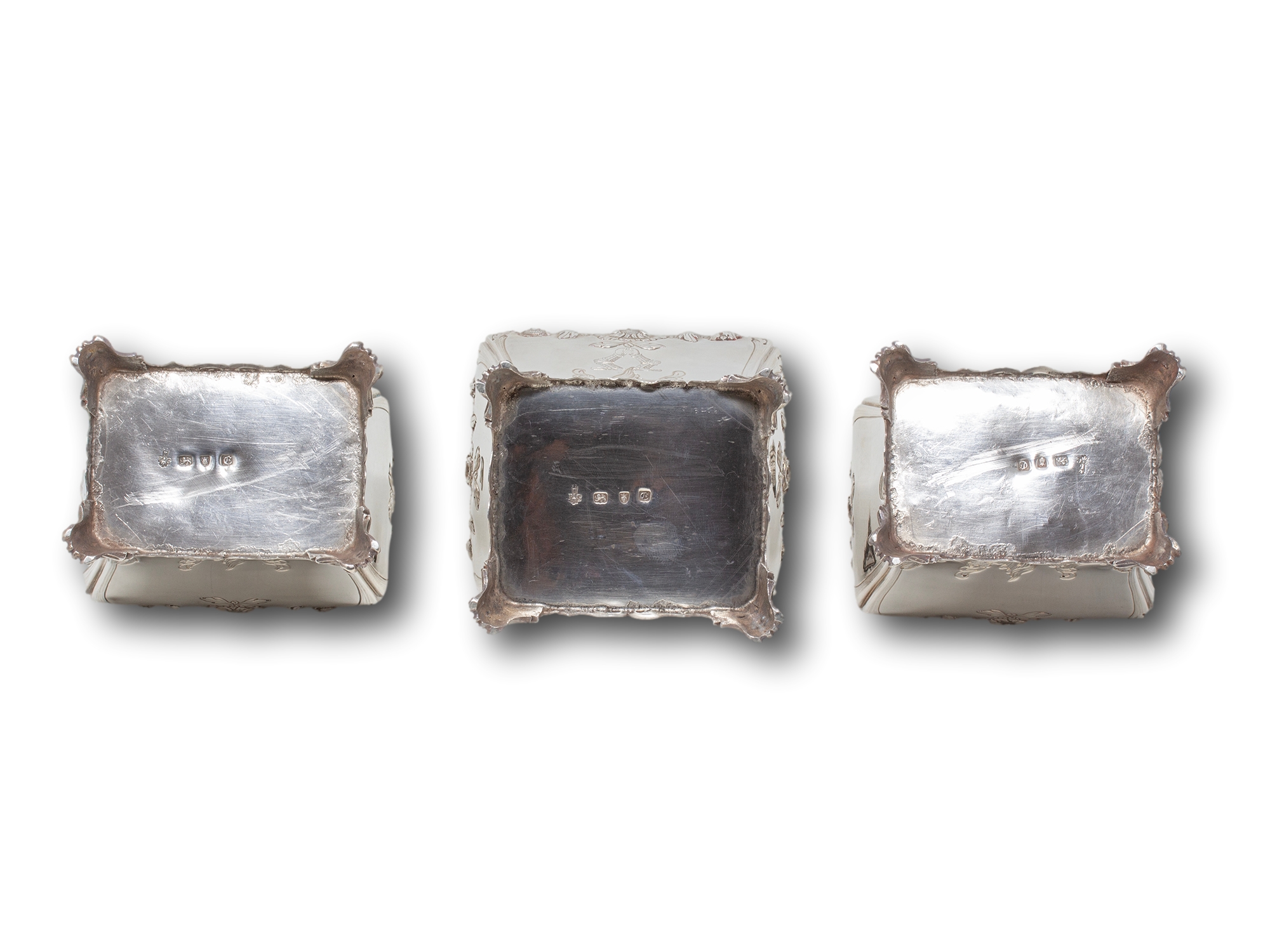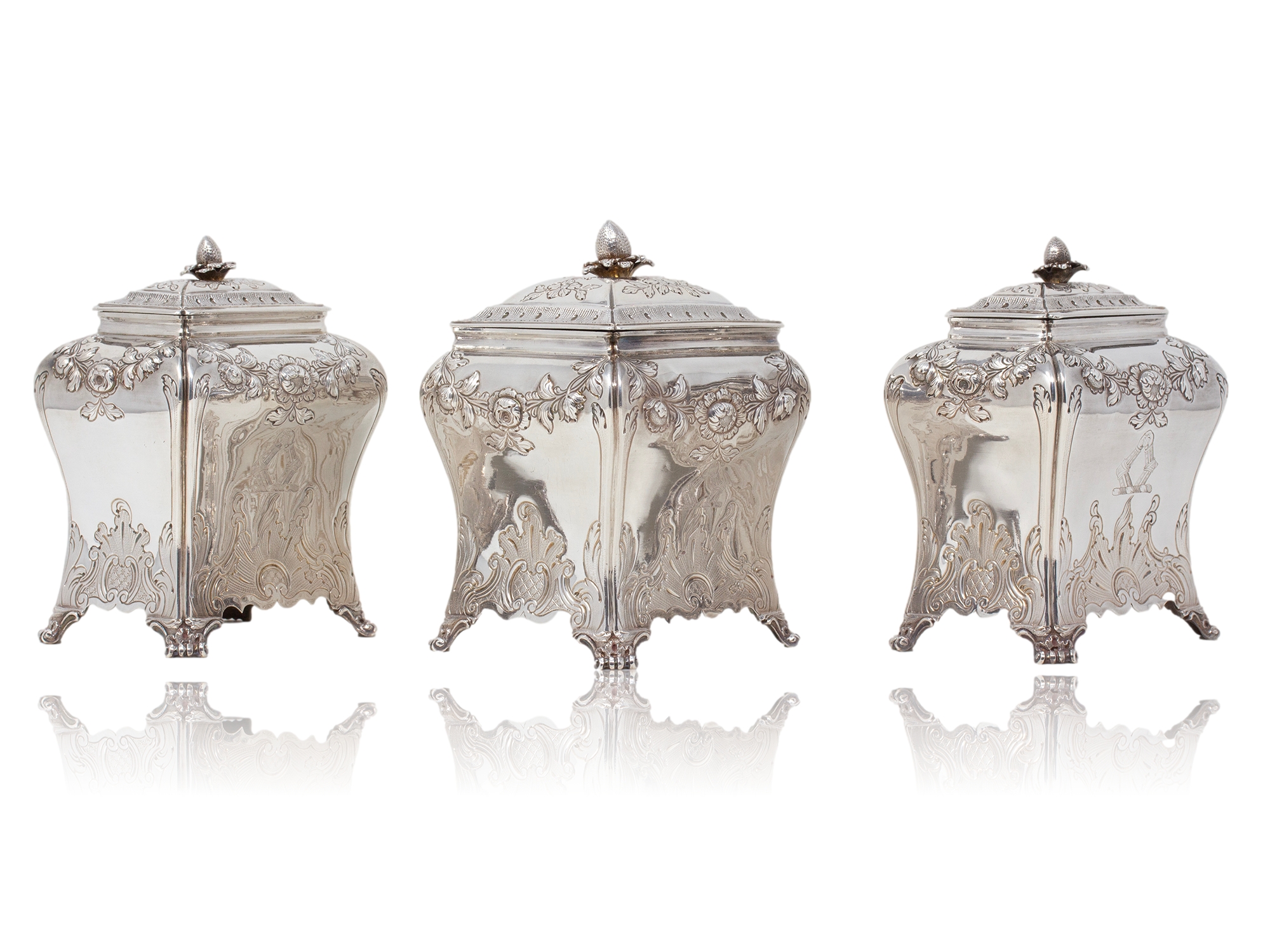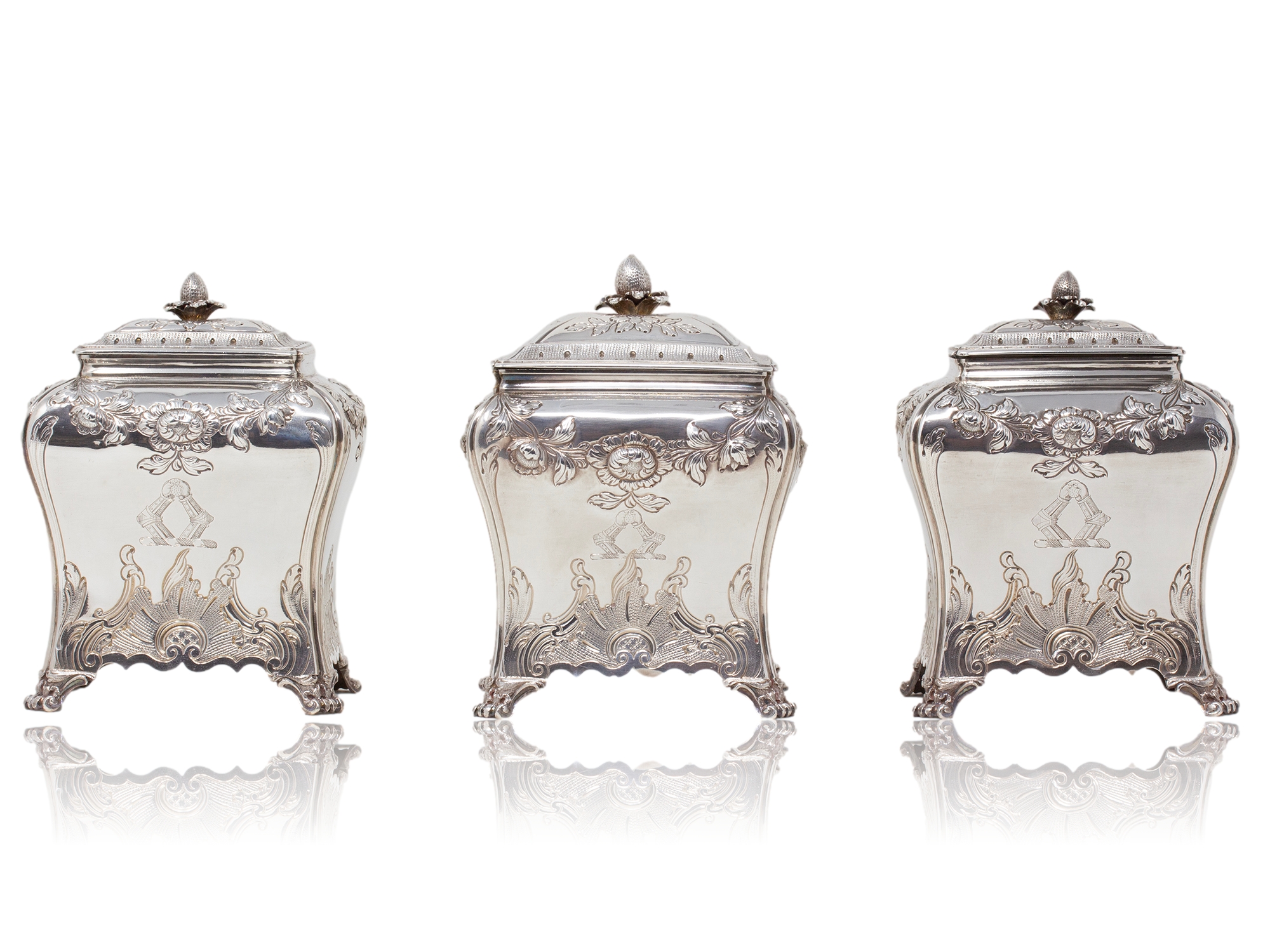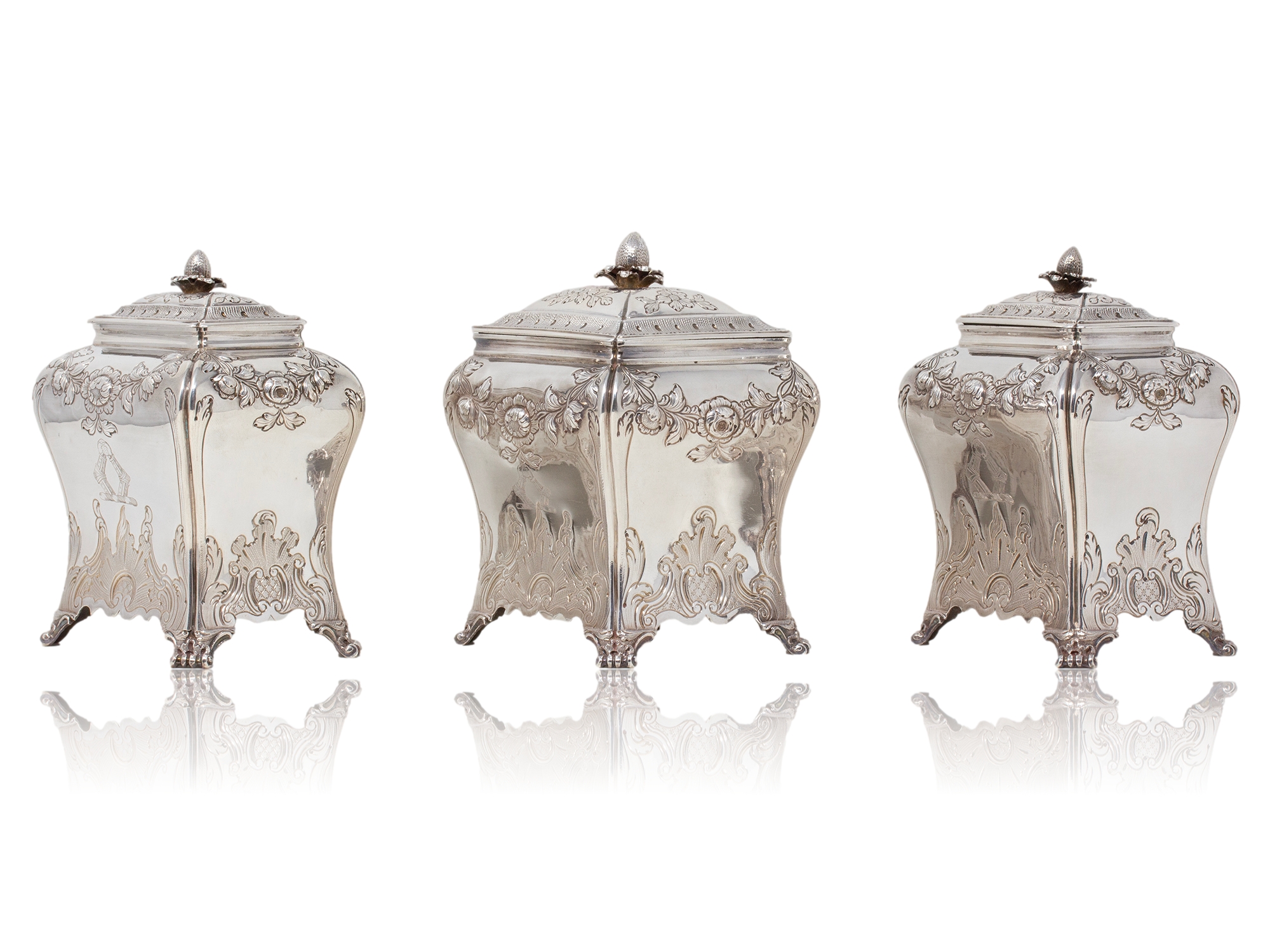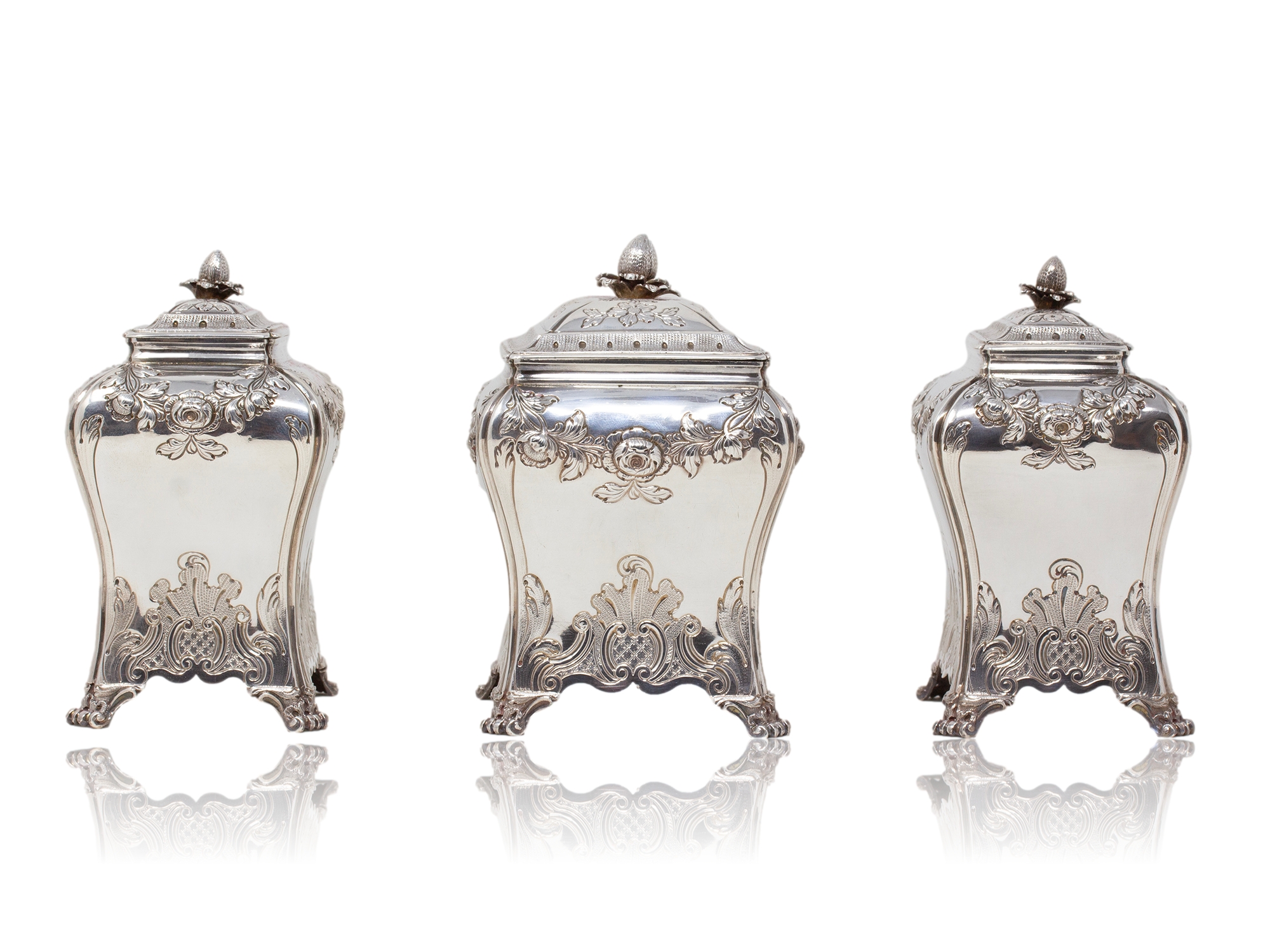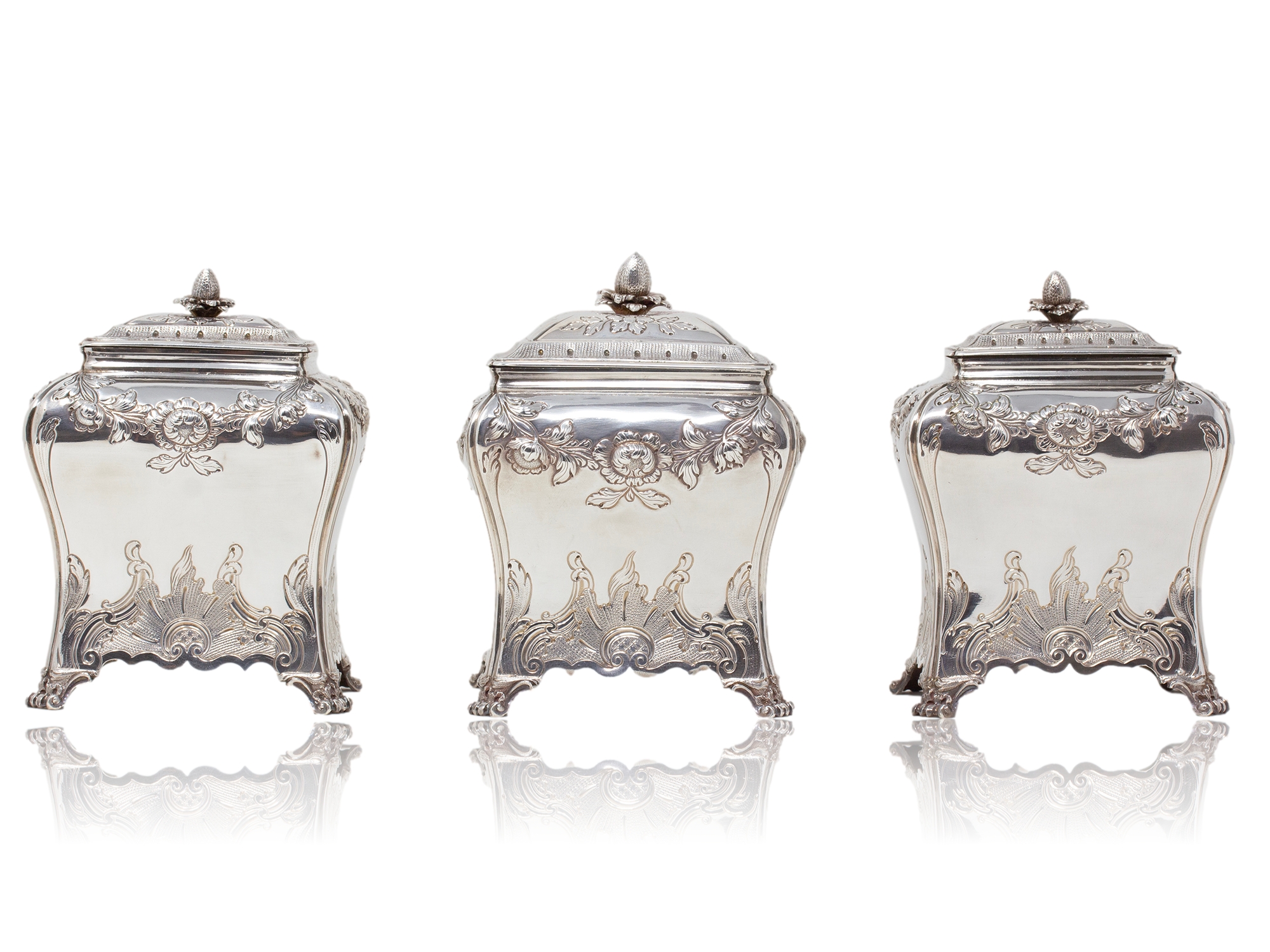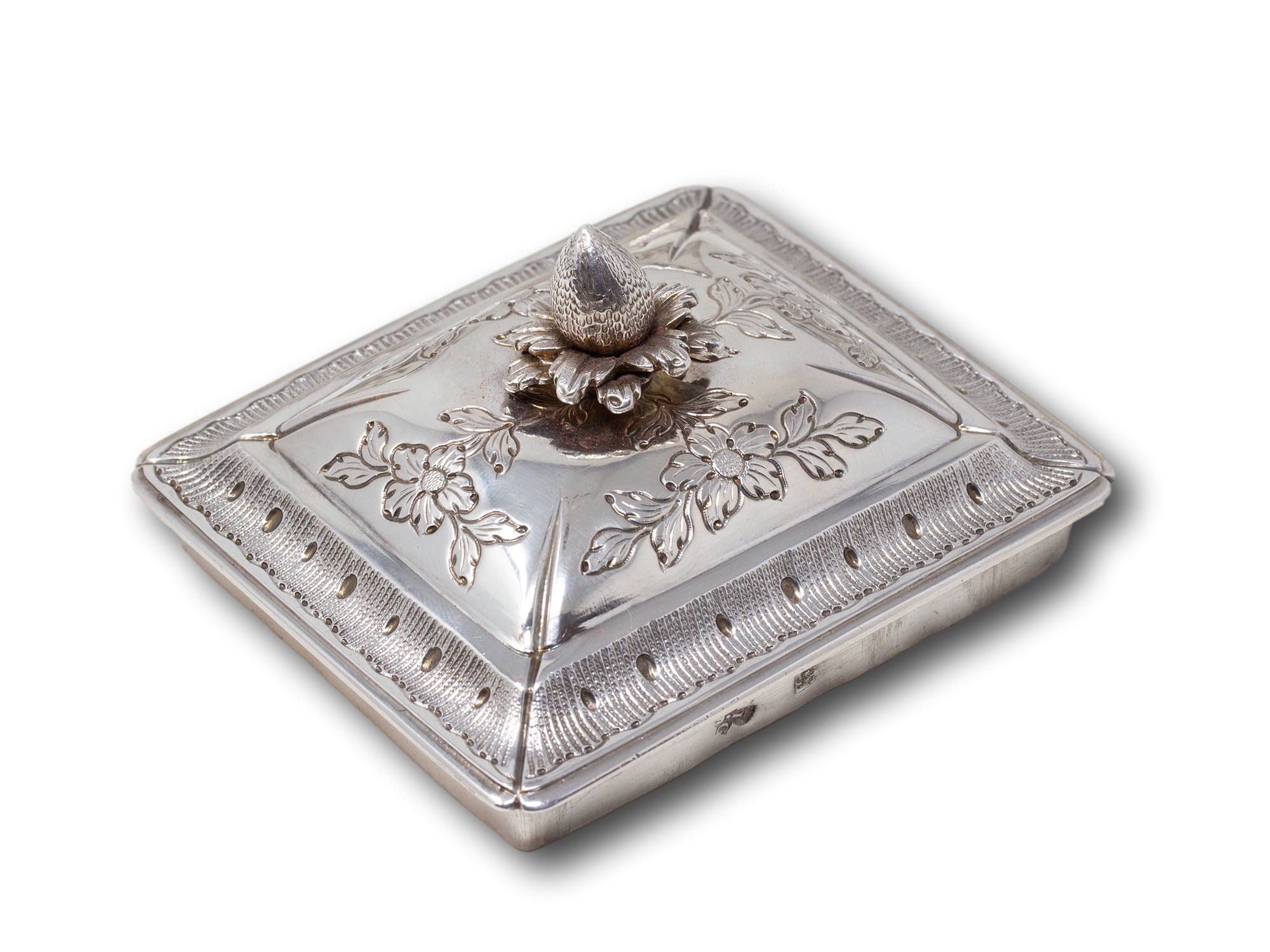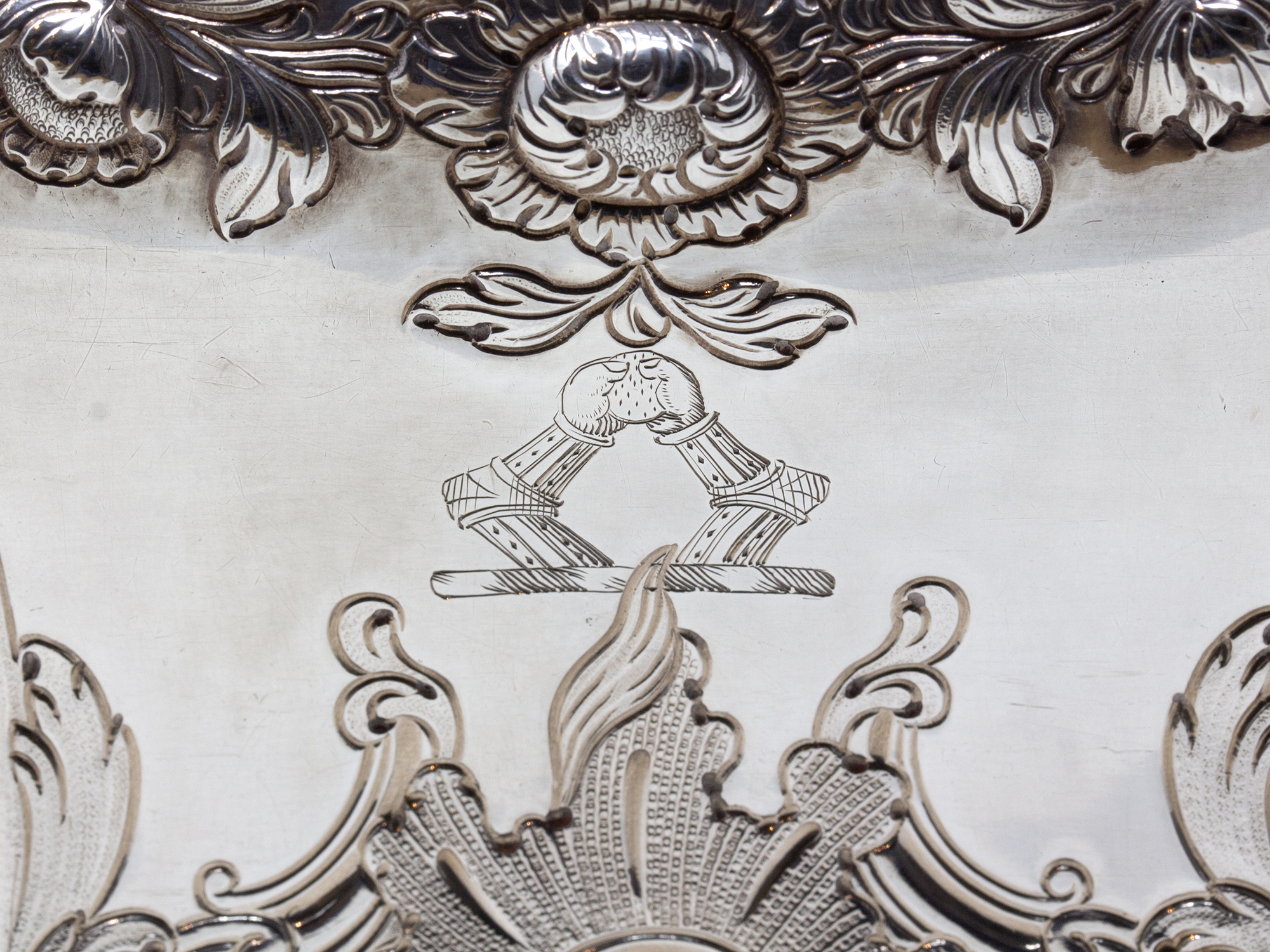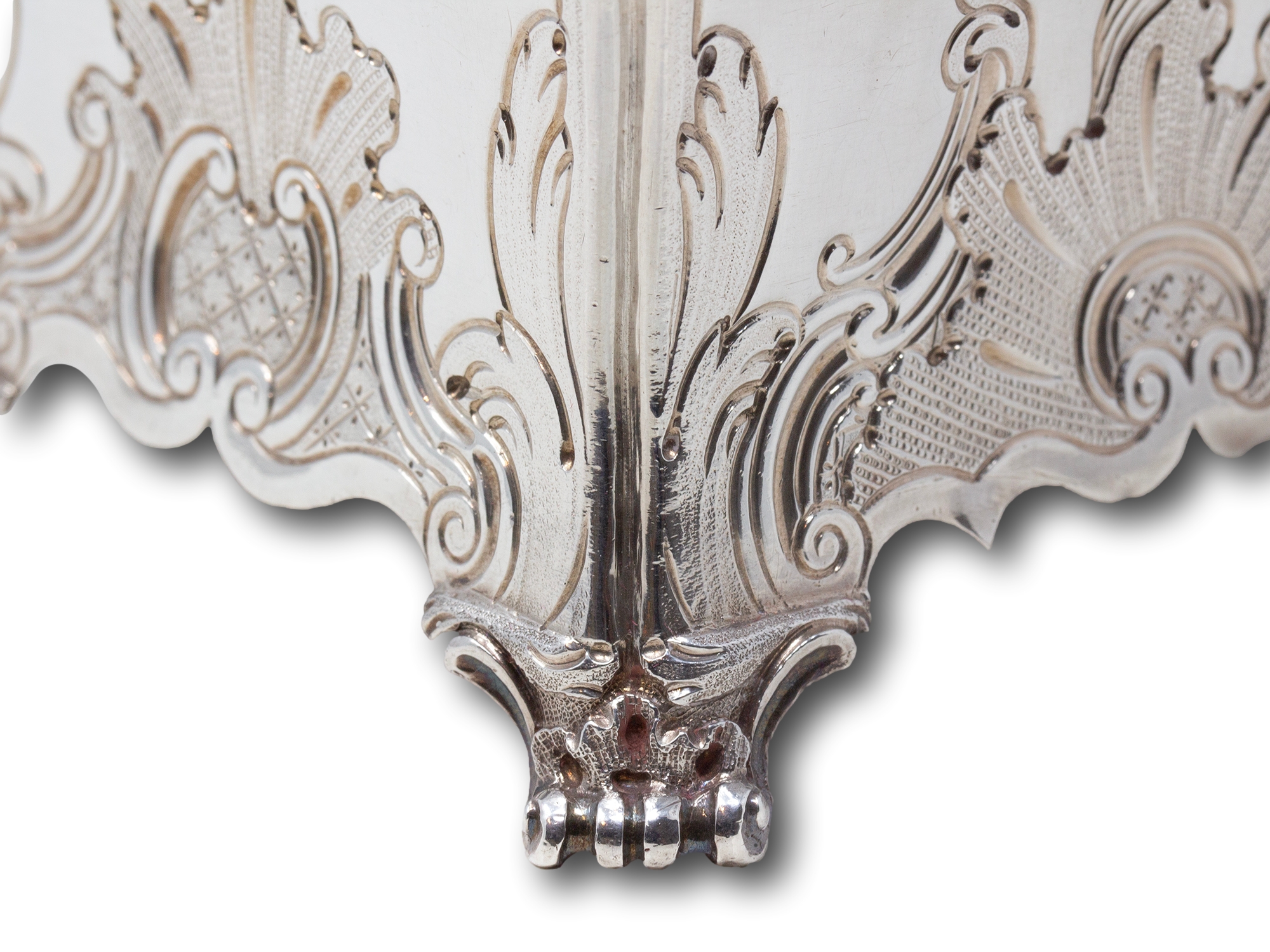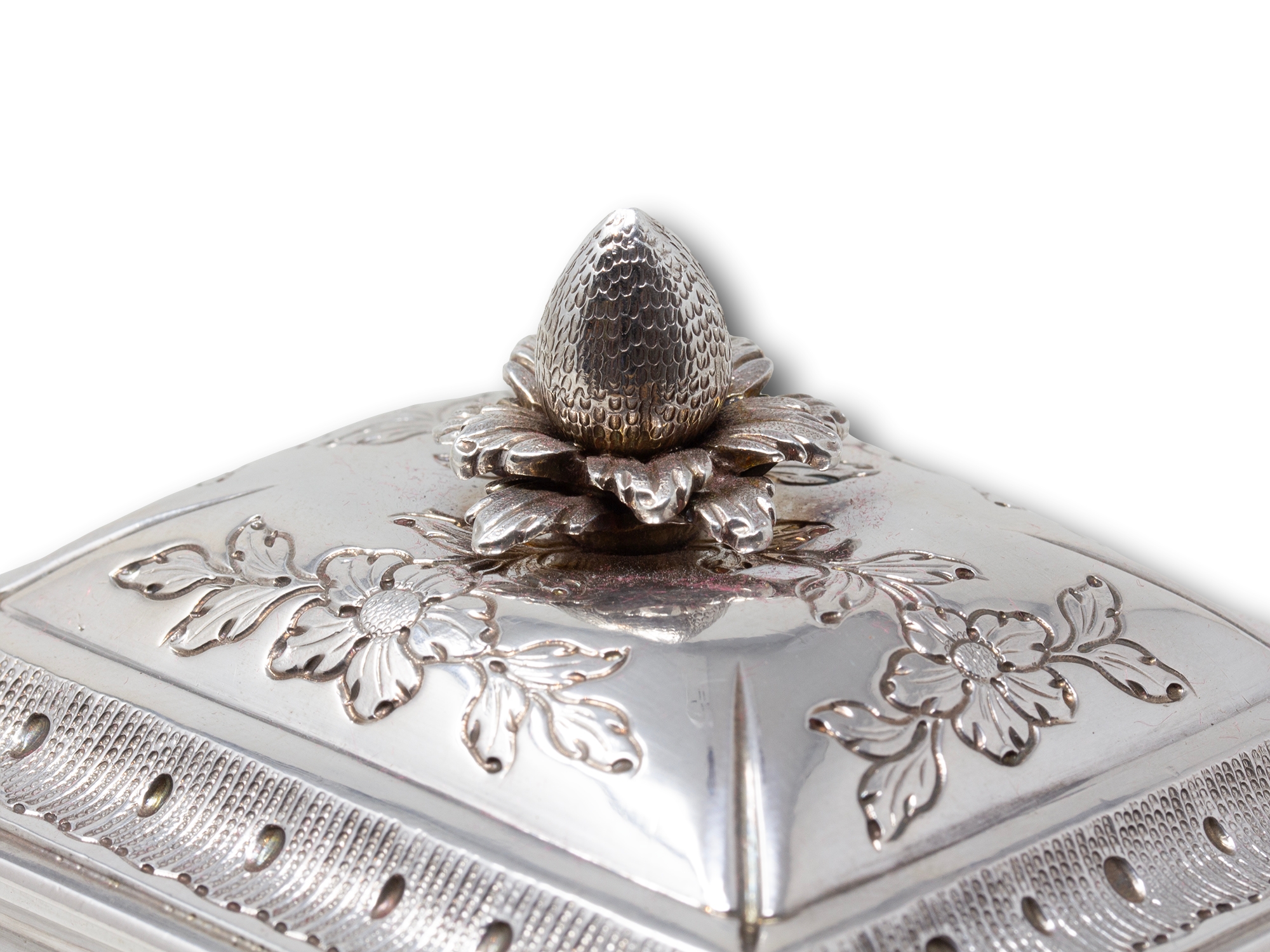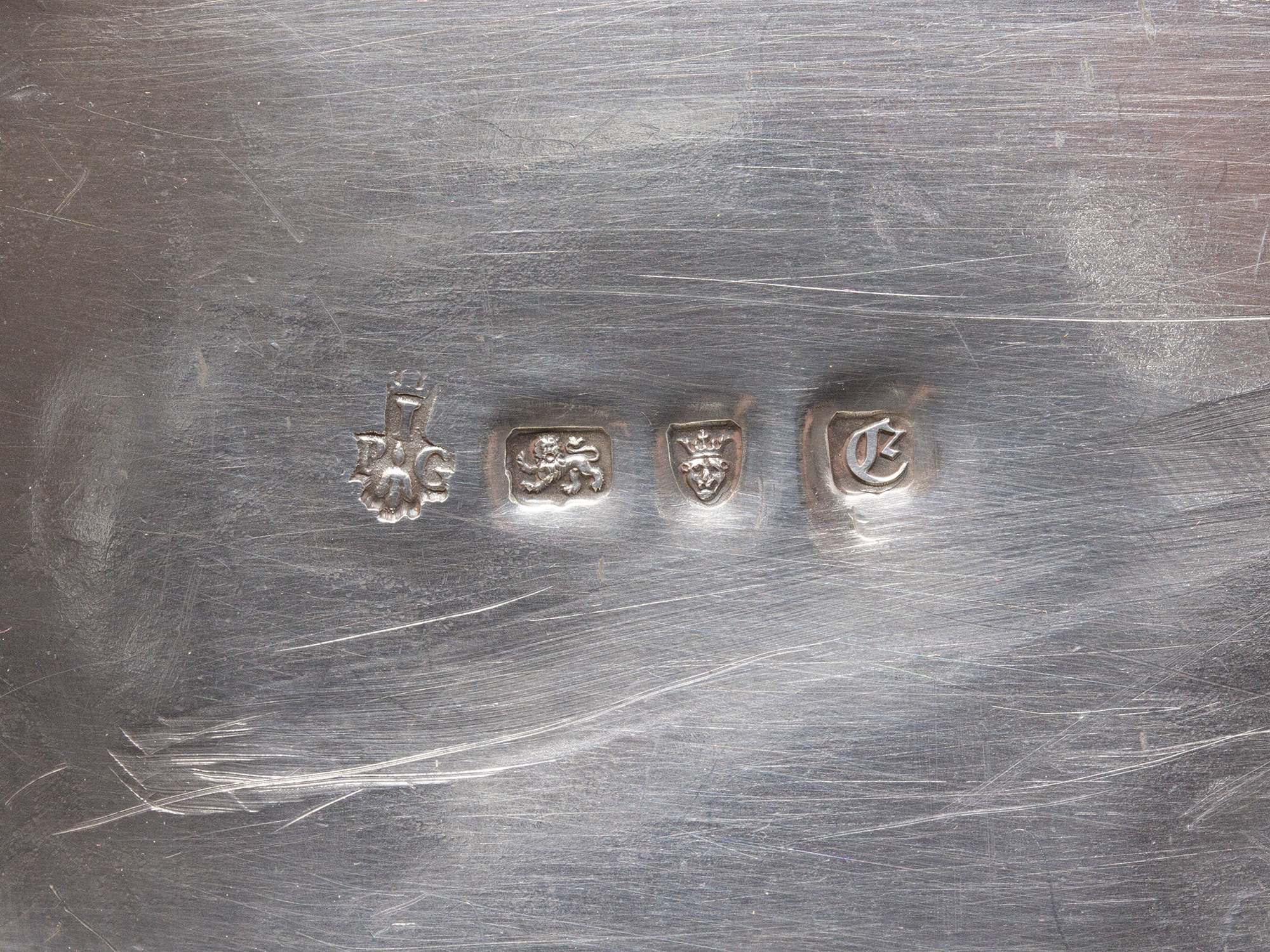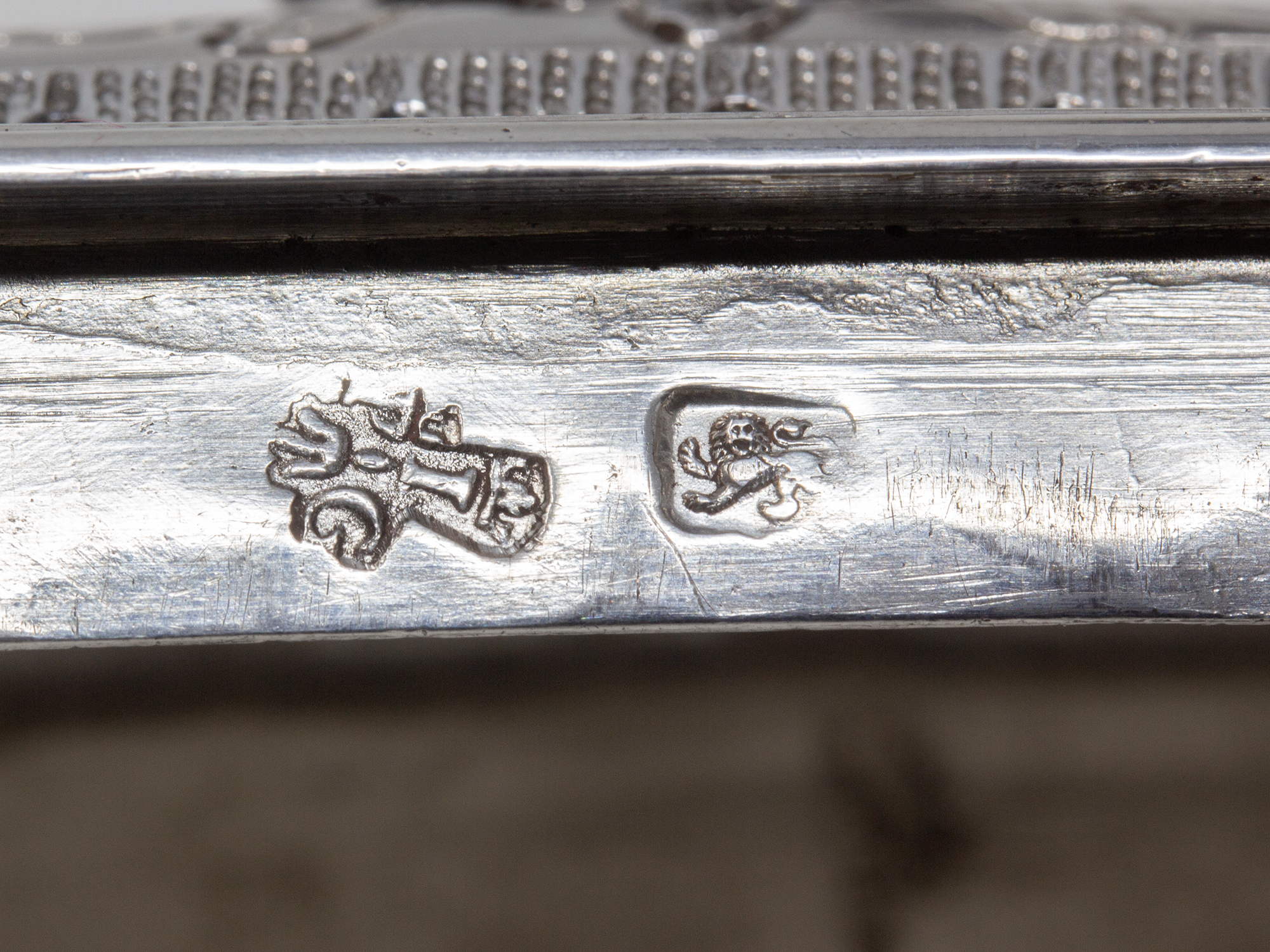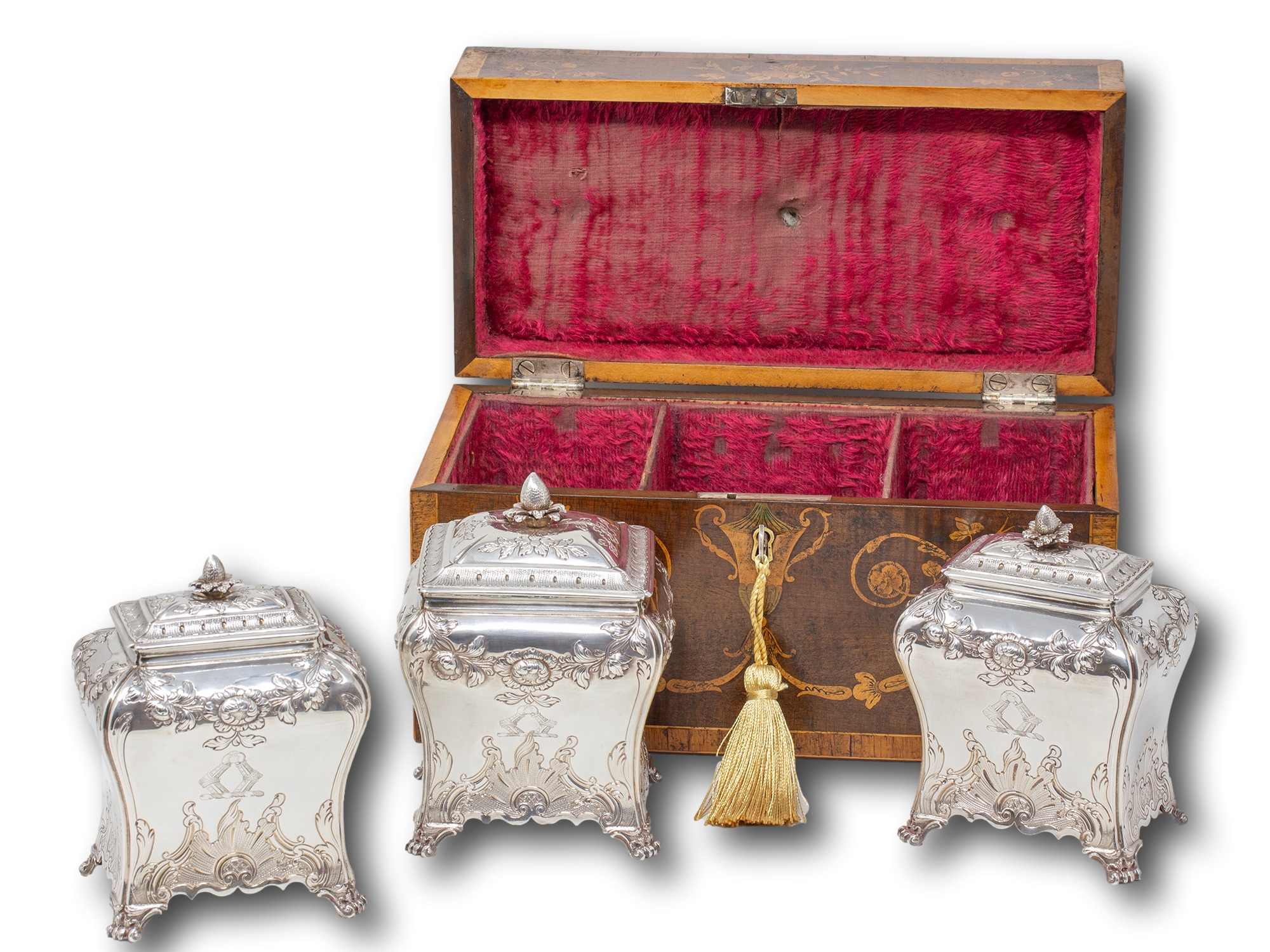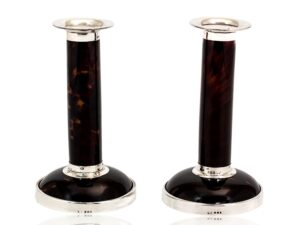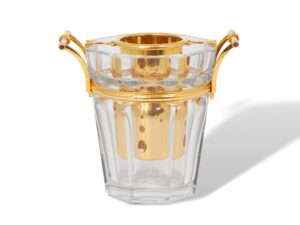George II Harewood Inlaid Tea Chest Pierre Gillois
SOLD
Intricate Inlaid Design From our Tea Caddy collection, we are pleased to offer this George II Harewood Inlaid Tea Chest. The Tea Chest of rectangular form veneered in Harewood and edged Boxwood. Each side is framed within a Tulipwood cross banding... Read More
Pierre Gillois Silver Tea Caddies
| Dimensions | 26.5 × 12.5 × 15 cm |
|---|---|
| Country | |
| Medium | |
| Period | |
| Year | |
| Literature | |
| SKU | 501336-TICEX |
Description
Description
Intricate Inlaid Design
From our Tea Caddy collection, we are pleased to offer this George II Harewood Inlaid Tea Chest. The Tea Chest of rectangular form veneered in Harewood and edged Boxwood. Each side is framed within a Tulipwood cross banding and features elaborate scrolling vine inlays stemming from a central urn with blossoming flowers to the front. The side with matching inlaid urns and the rear with a matching inlay to the front without the central urn. The top of the Tea Chest features a central blossoming flower surrounding the silver handle with star shaped decoration. When opened the Tea Chest reveals the cushioned velvet lining with three partitions separating the Tea Caddies and Sugar Caddy. The Tea Caddies cast from Silver shaped in bombe form with beautifully executed rococo design by renowned London silversmith Pierre Gillois dating to 1760. The Tea Caddies decorated with repousse floral swags stood upon four scrolling feet and surmounted with a tea leaf finial. The Tea Chest dates to the last reigning year of George II during the Georgian period.
The Tea Chest comes complete with a working lock and key.
Literature Mark Goodger 25th Anniversary Catalogue p.28
Pierre (Peter) Gillois was a Huguenot silversmith whose name appears in the records of Dublin goldsmiths in 1753-4, but details of a working career are recorded. His first hallmark was entered in London as a large worker in November 1754. He was registered to work at Wardour Street, St Anne, Soho where he appeared as a plateworker in the Parliament Report list 1773. The second mark entered on 15th June 1782 working from 25 Queen Street, Seven Dials. Gillois’ work appears from the few surviving examples to have been confined almost entirely to tea caddy and sugar box sets of a delicate rococo style.
Harewood is a type of sycamore maple which has been stained and treated to take the natural cream colour to a rich brown.
Boxwood can be found in Europe, Northwest Africa and Southwest Asia. It is a light cream that turns darker to brown when exposed to light. The trees are very small, which is suited to smaller projects like edging or inlay instead of veneers.
Tulipwood is also known as Brazilian Tulipwood, Brazilian Pinkwood and Bahia Rosewood. It is found in South America, mainly Brazil. The colour is a warm yellow with streaks or brown-red grain.
Georgian era was a period in British history dating from 1714-1837, the Georgian era after the Hanoverian kings George I, George II, George III and George IV.
With every purchase from Mark Goodger Antiques, you will receive our latest catalogue, a Certificate of Authenticity, detailed care instructions for your chosen piece and an independent invoice (for insurance purposes) will be enclosed. As well as being protected by a no-hassle, money-back policy, your piece will be entirely insured during the shipping process to ensure the safety of your item.
Additional information
Additional information
| Dimensions | 26.5 × 12.5 × 15 cm |
|---|---|
| Country | |
| Medium | |
| Period | |
| Year | |
| Literature | |
| SKU | 501336-TICEX |
